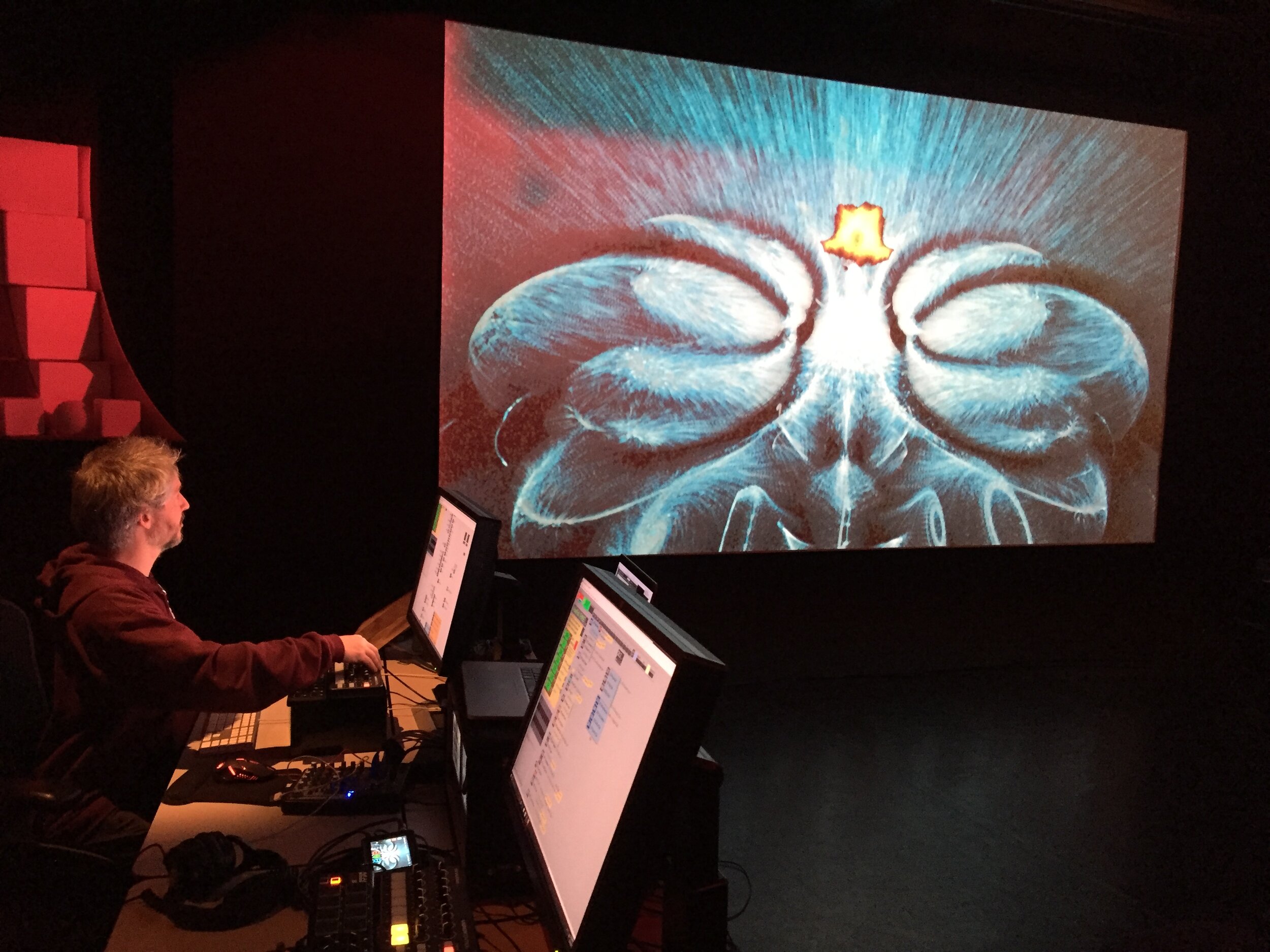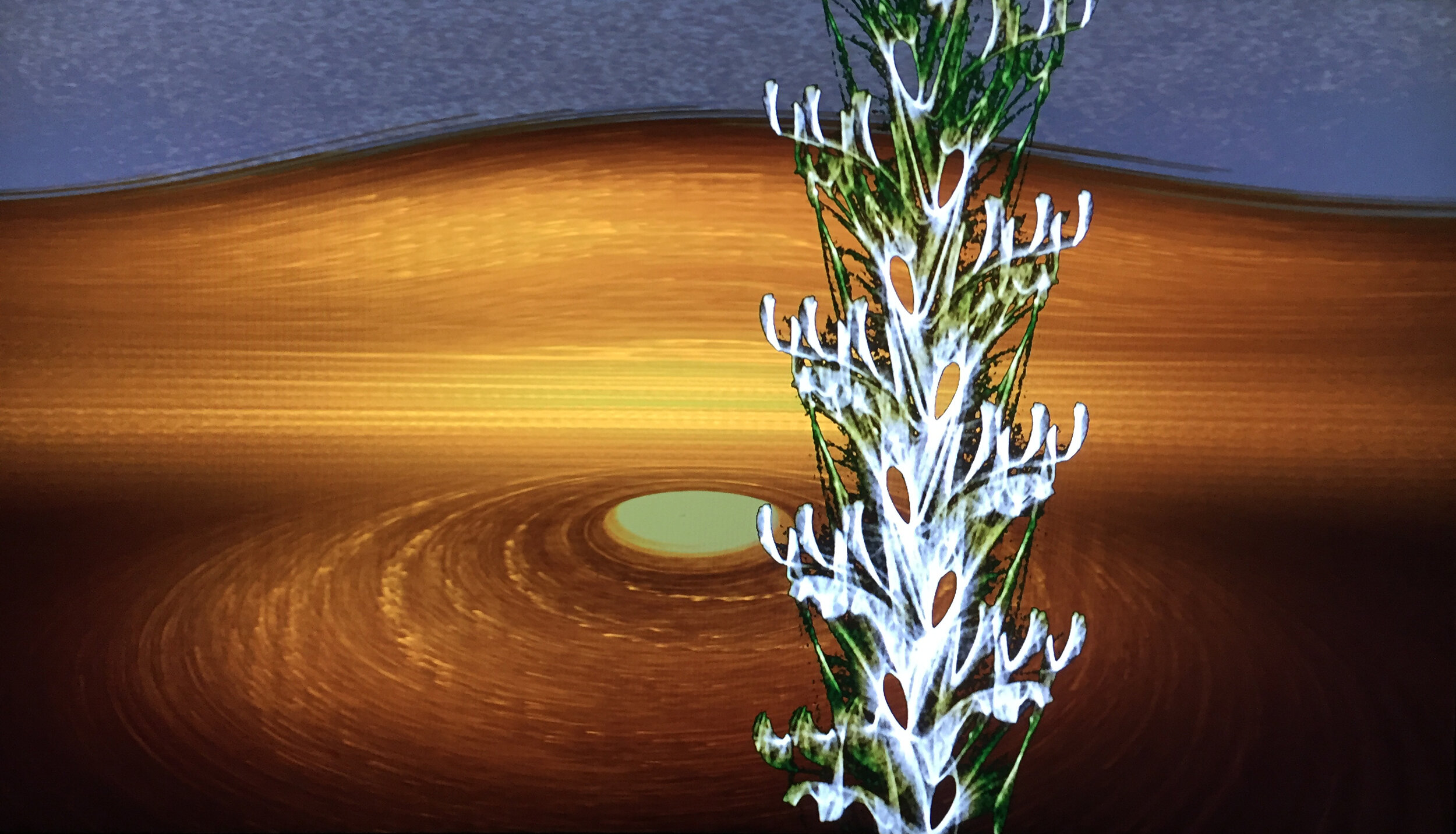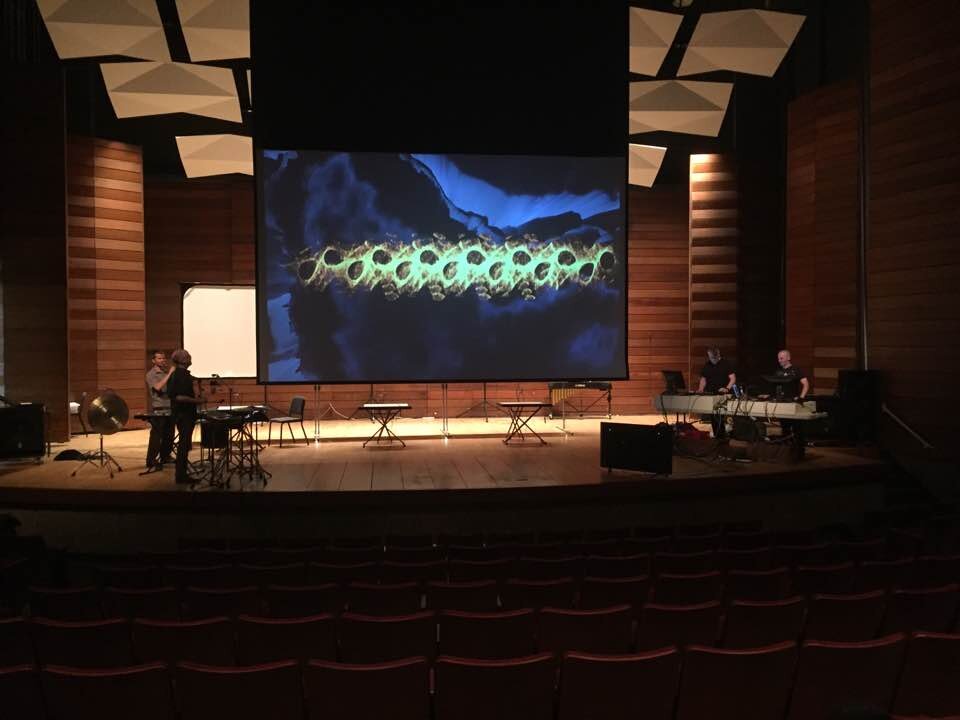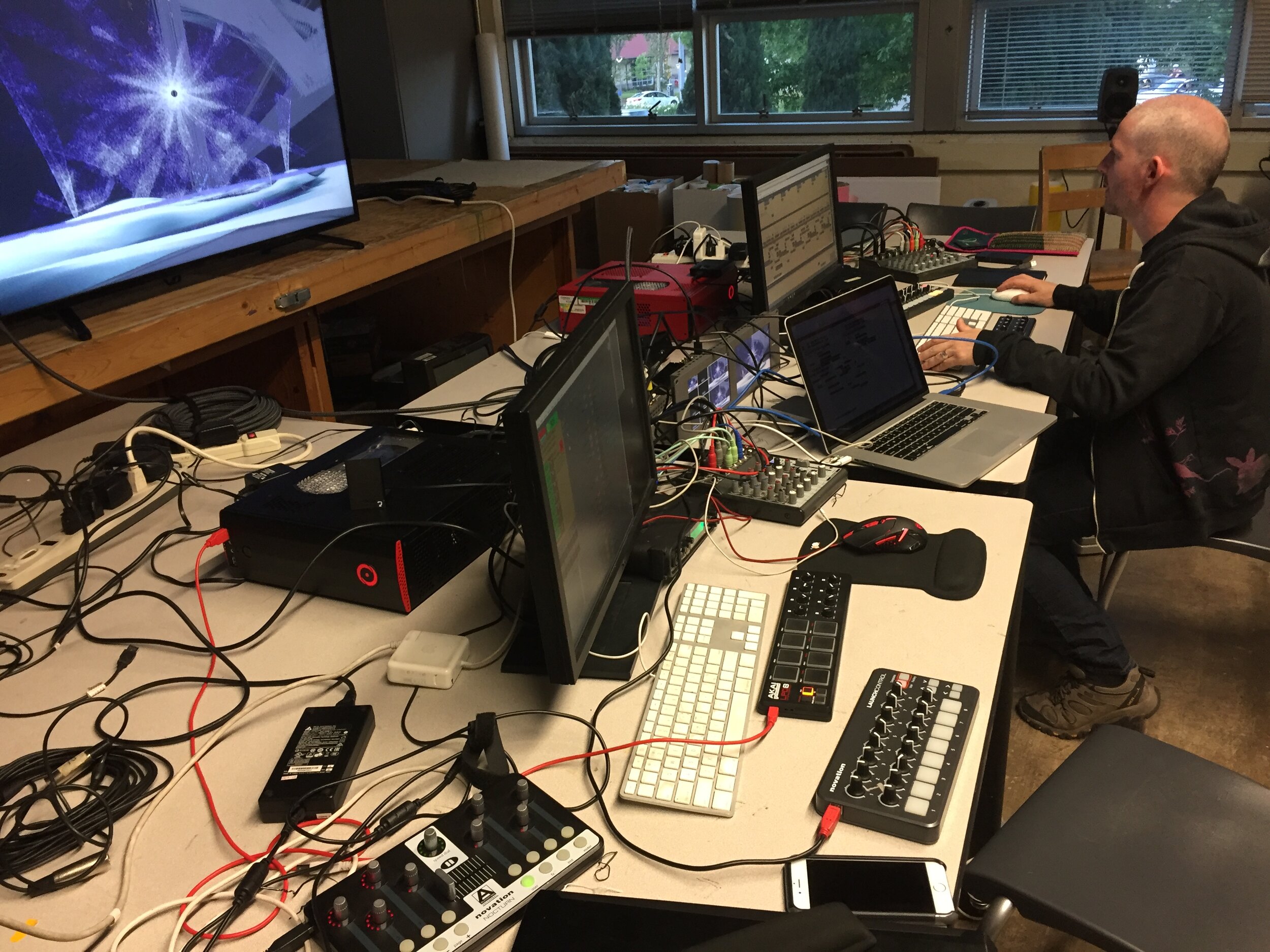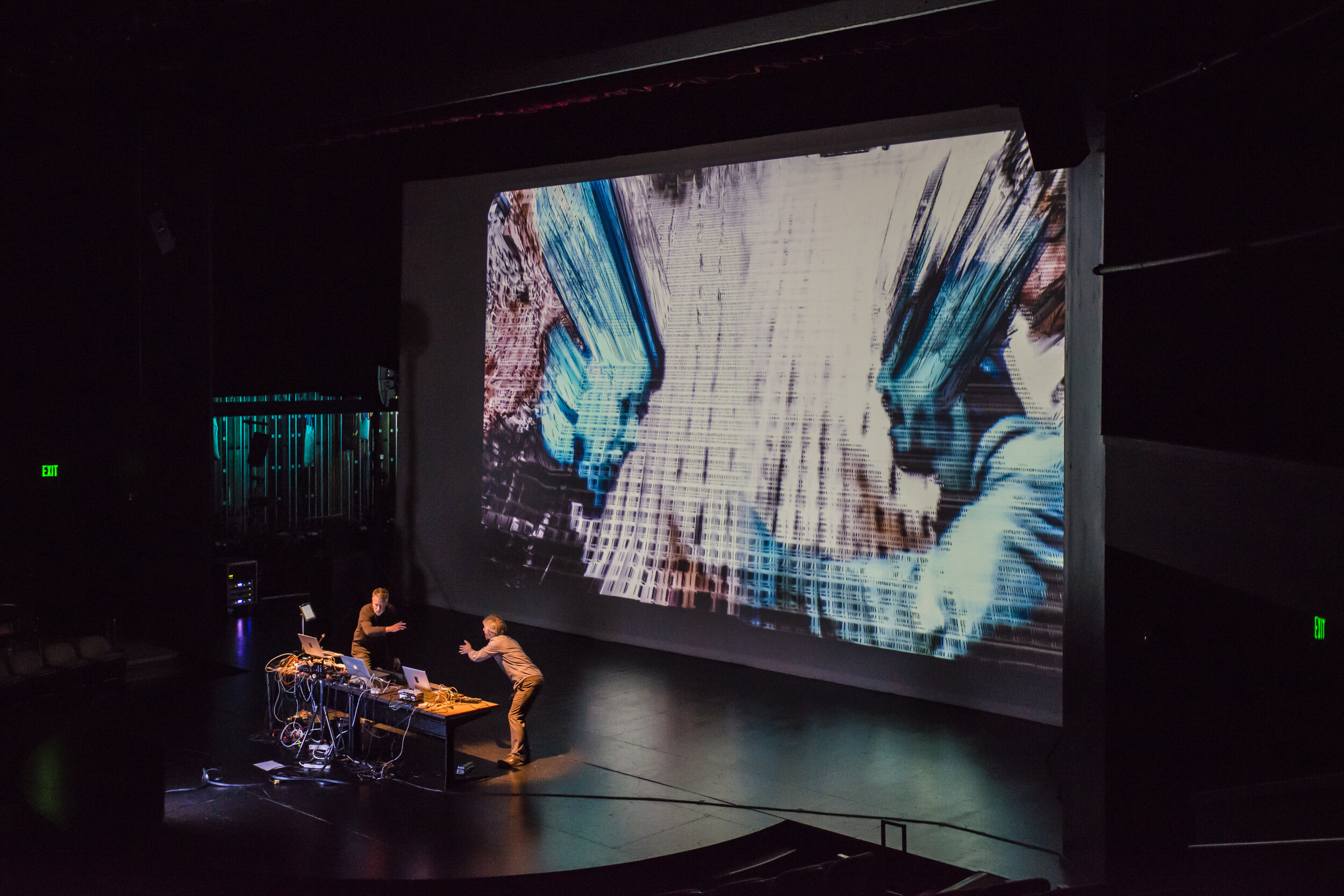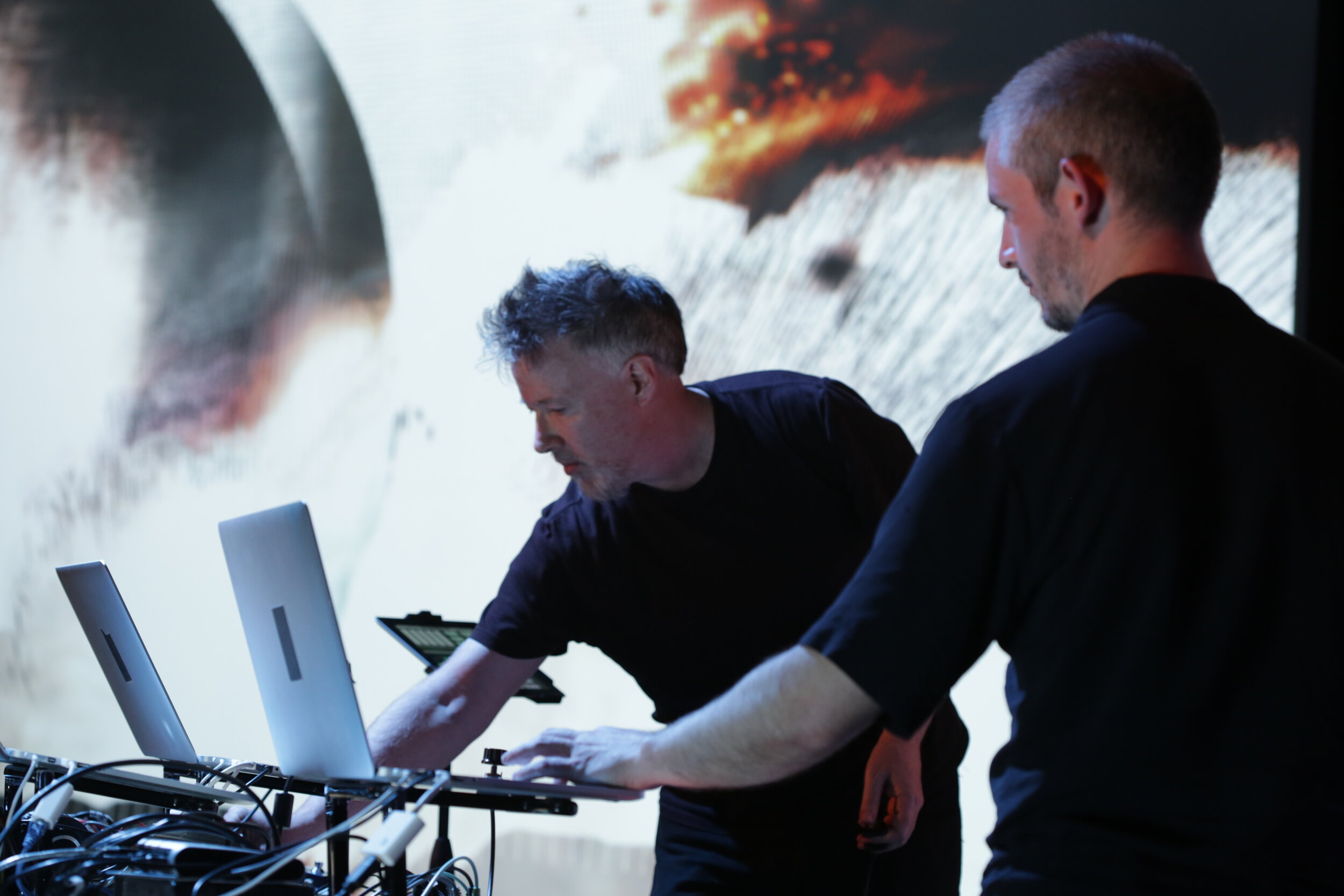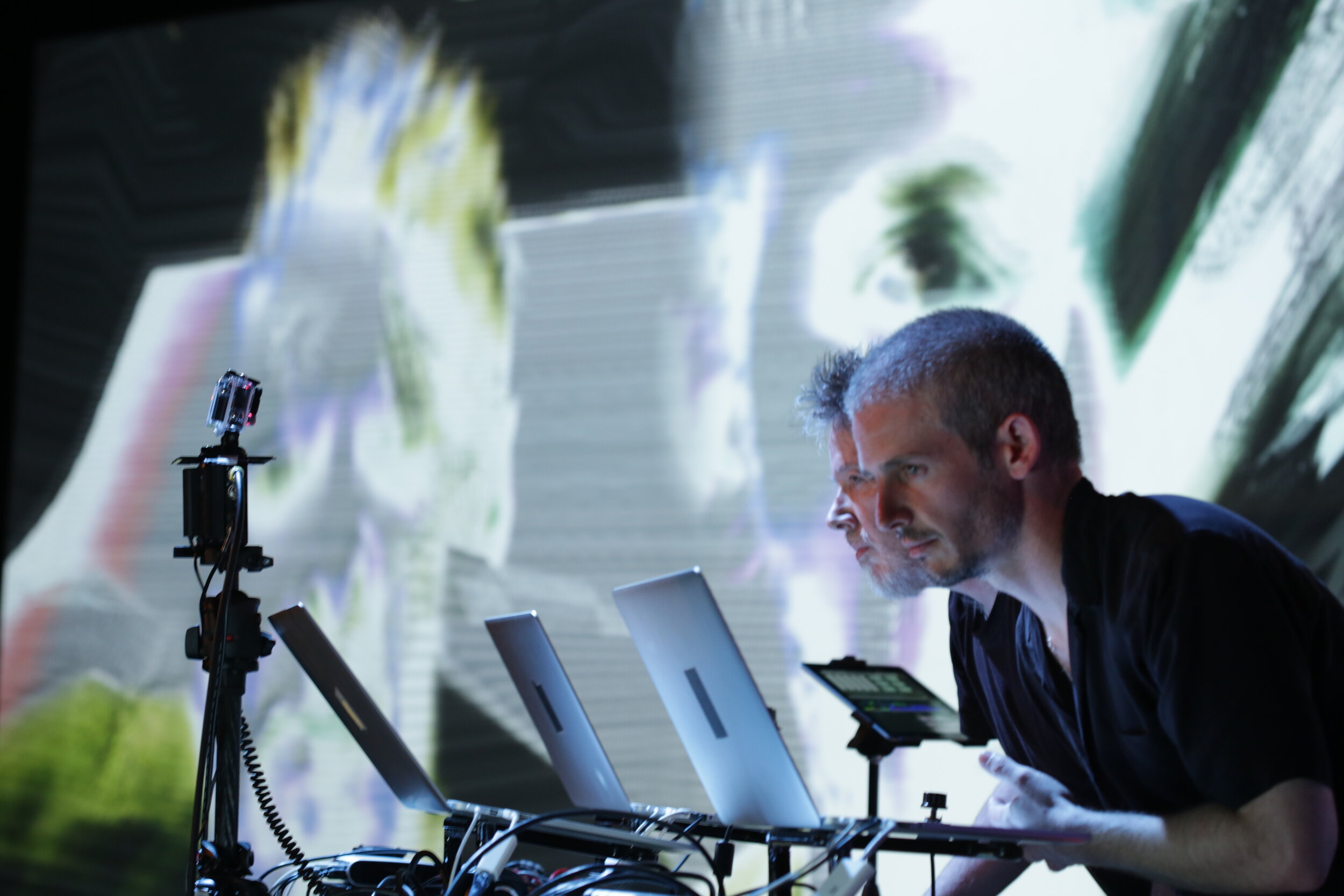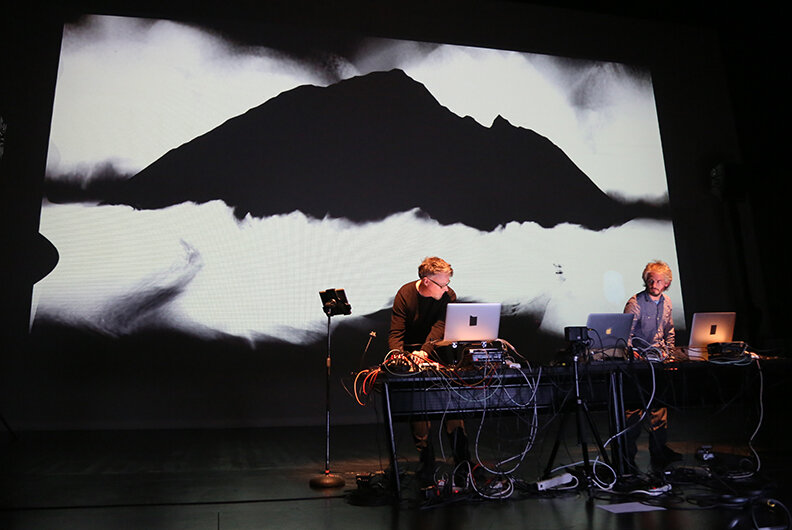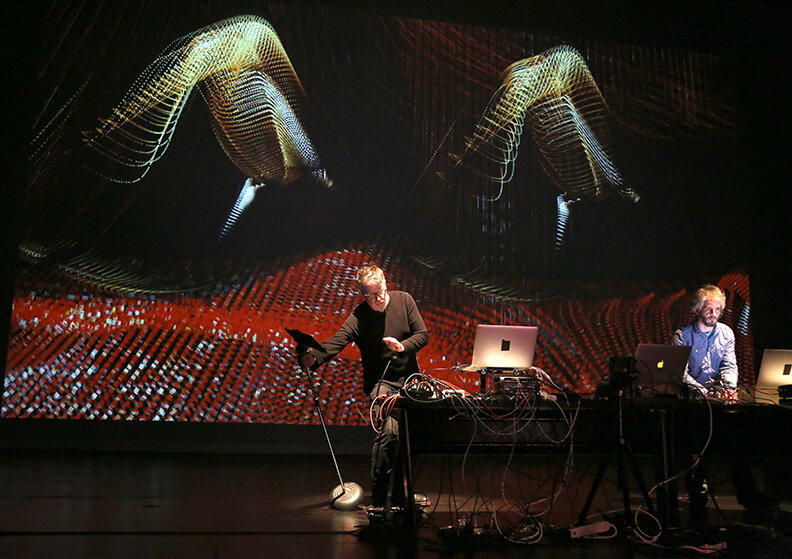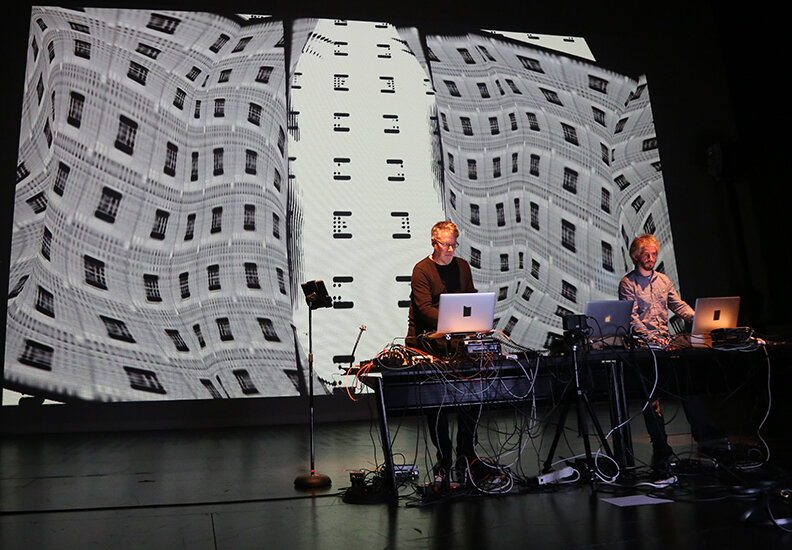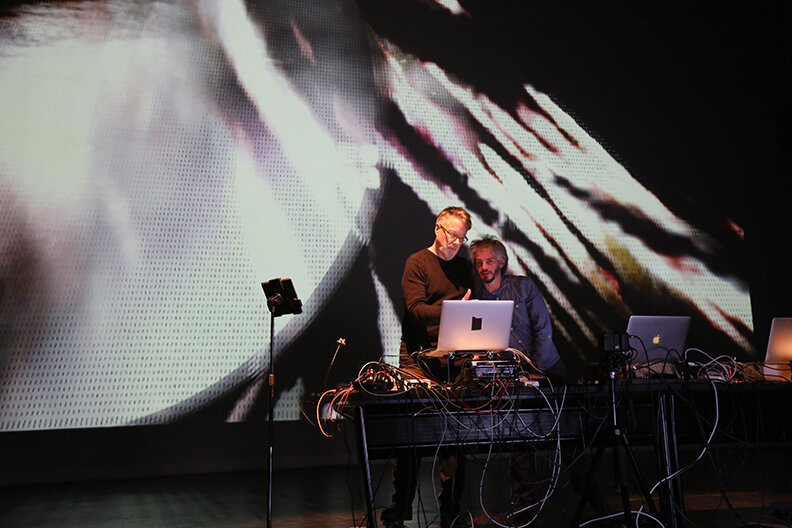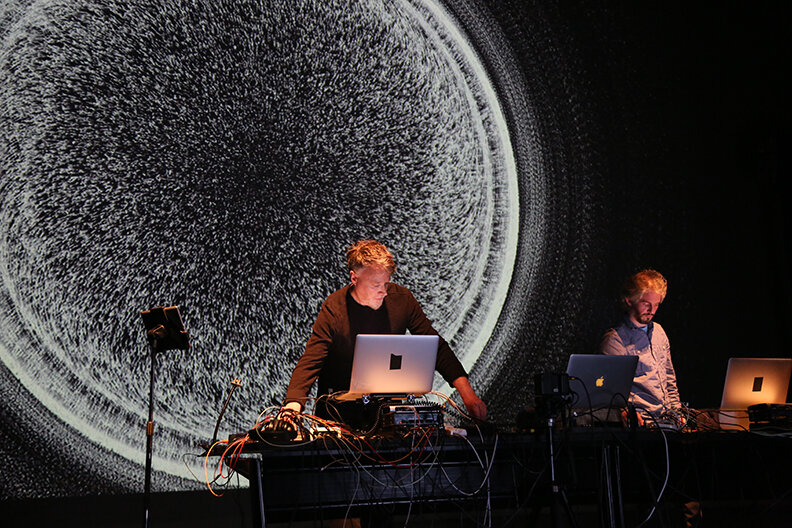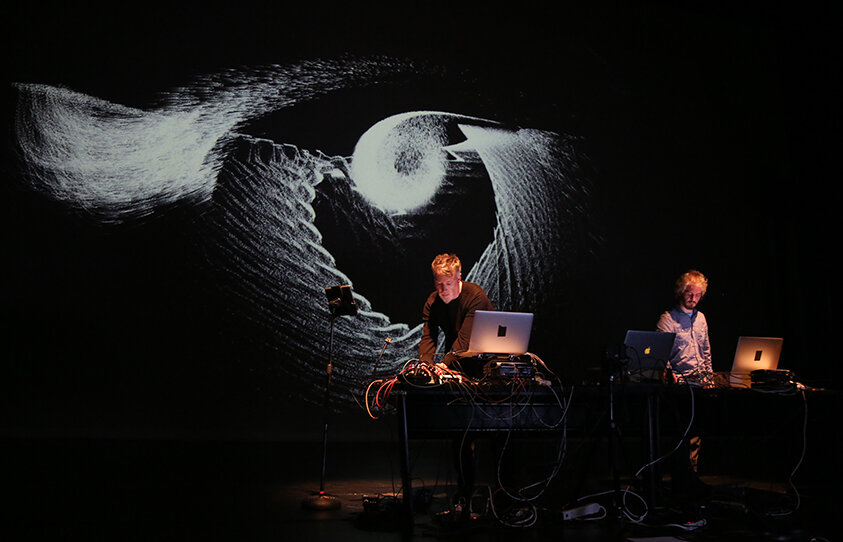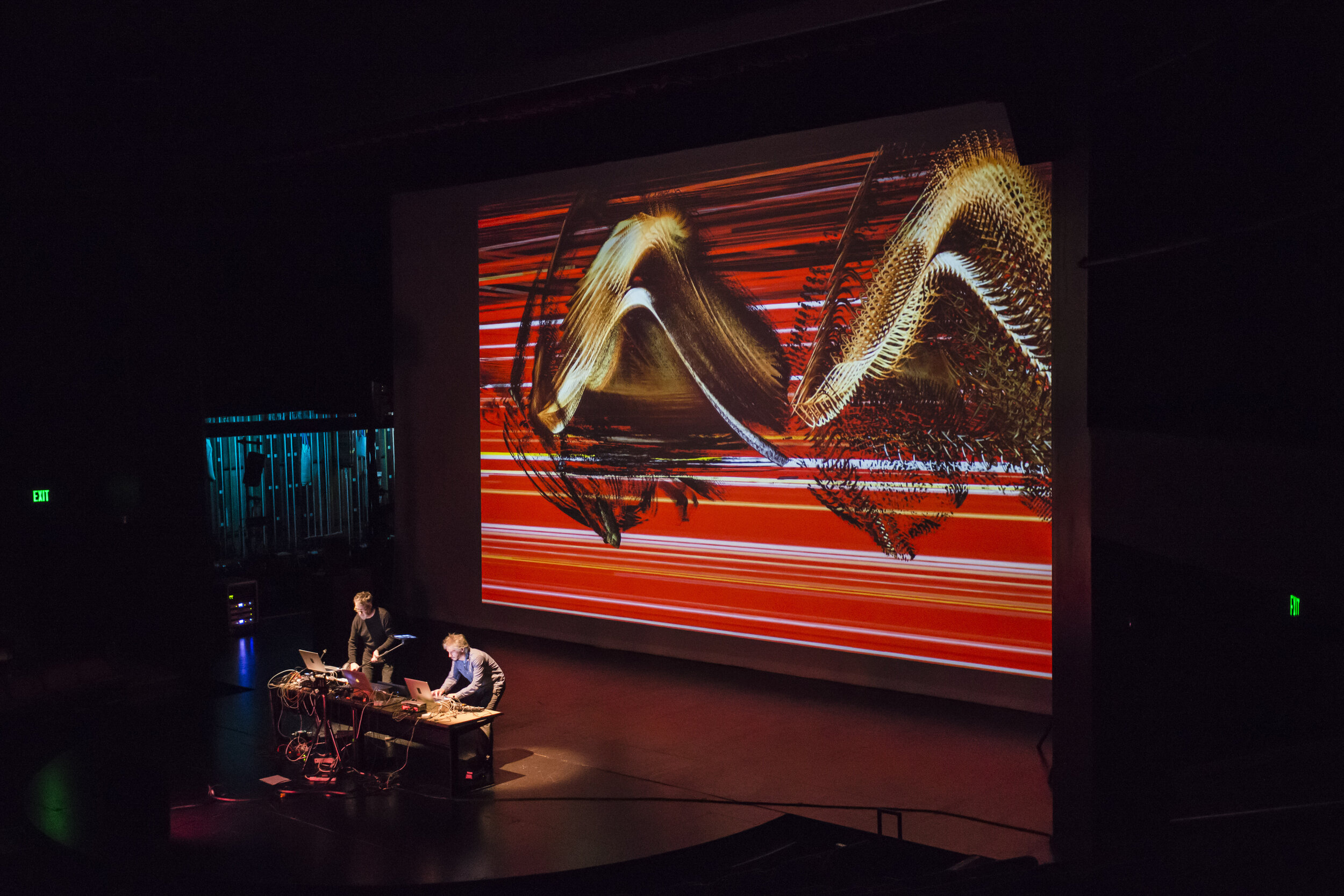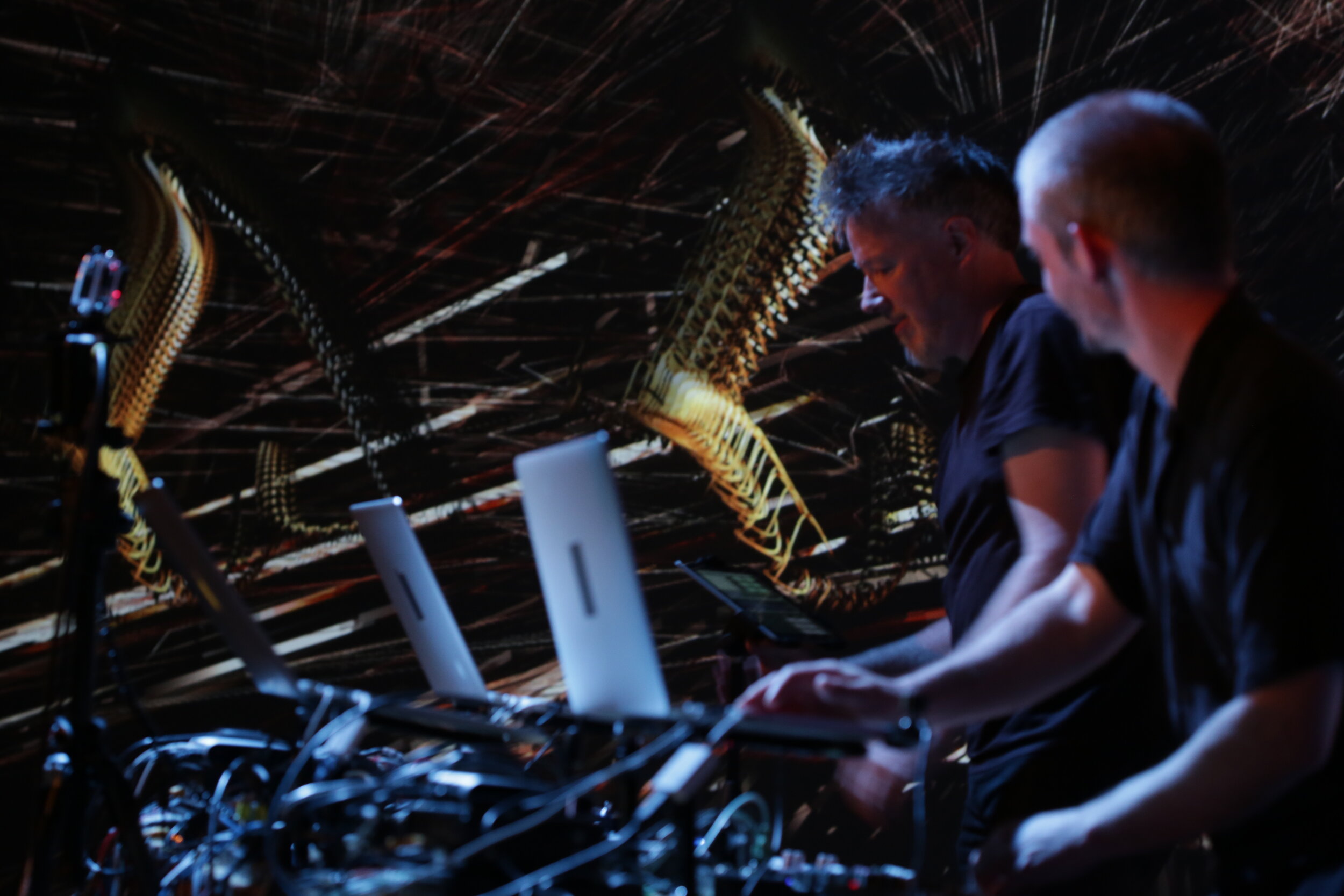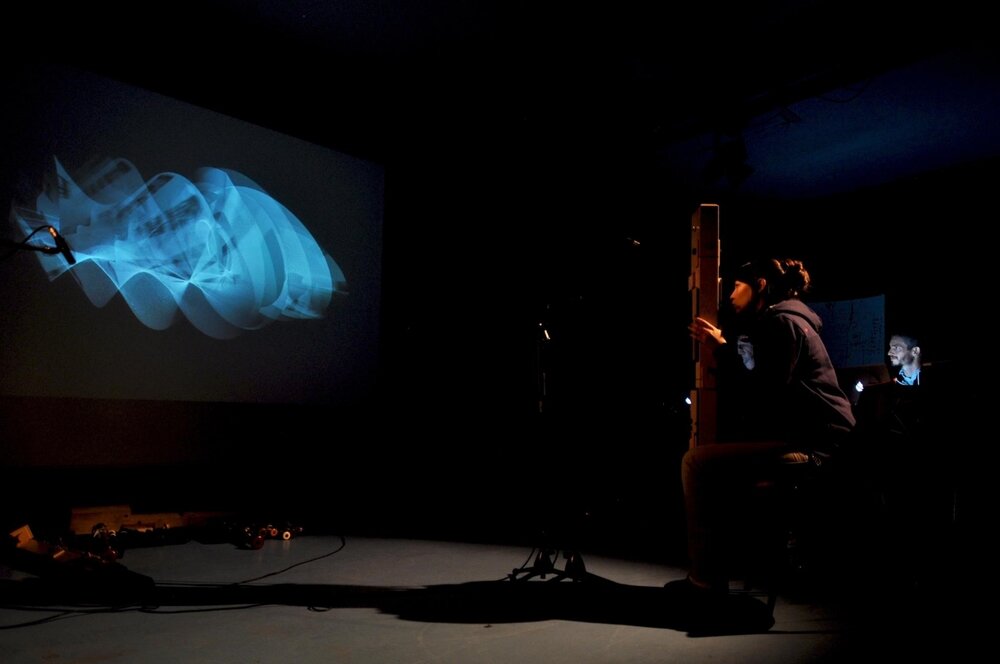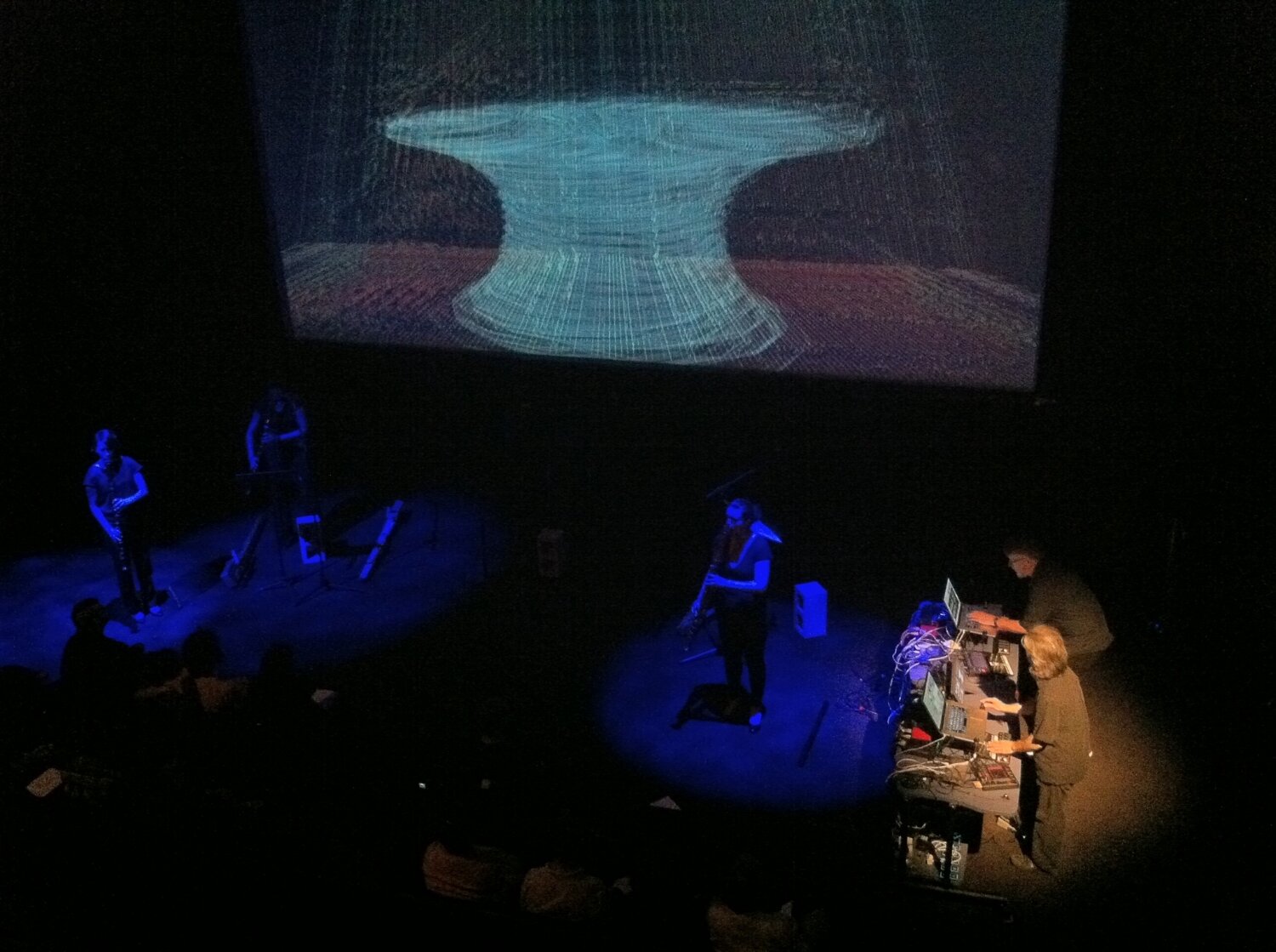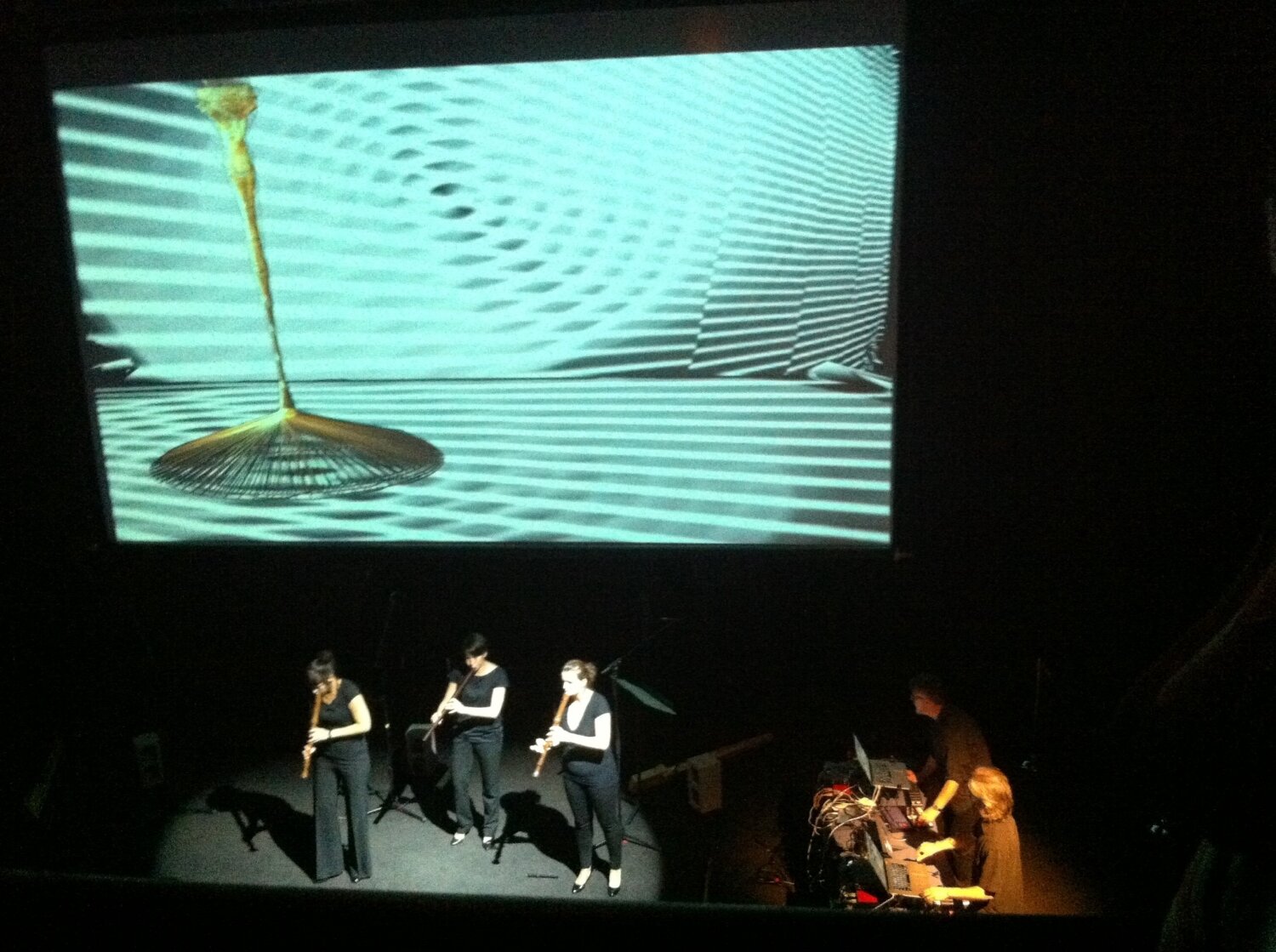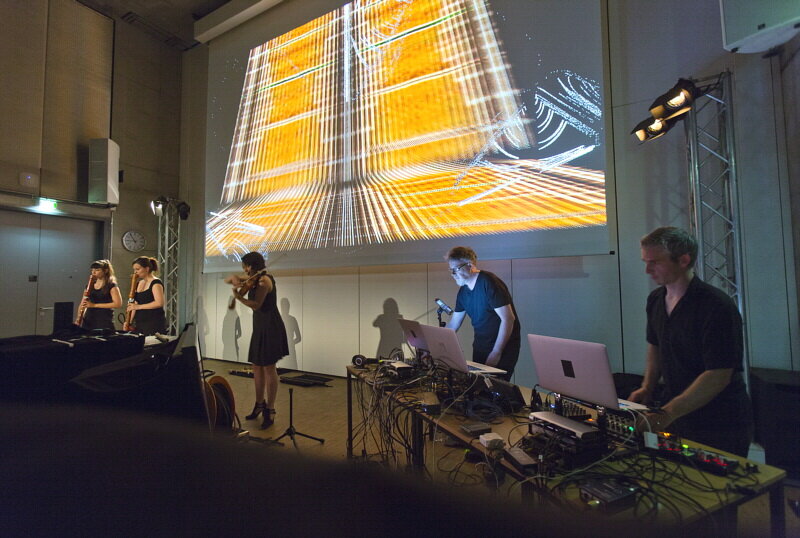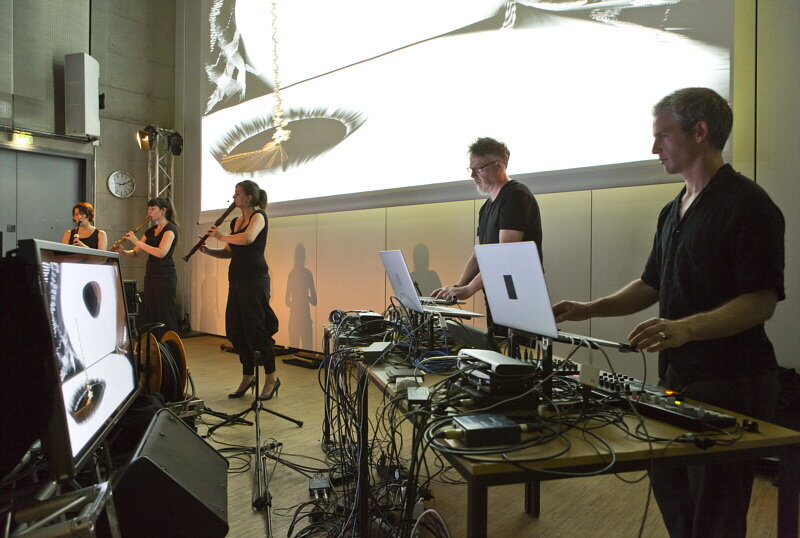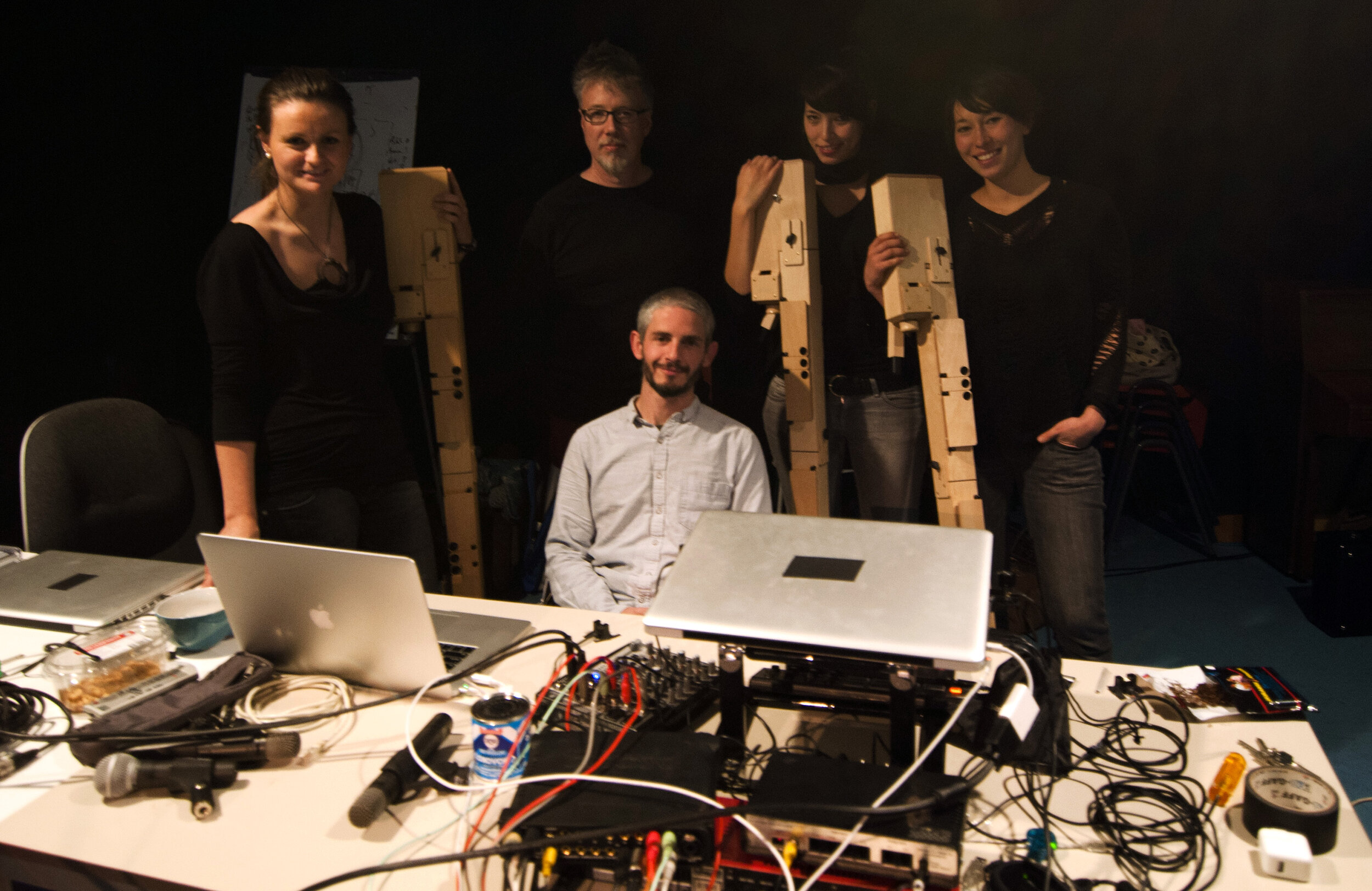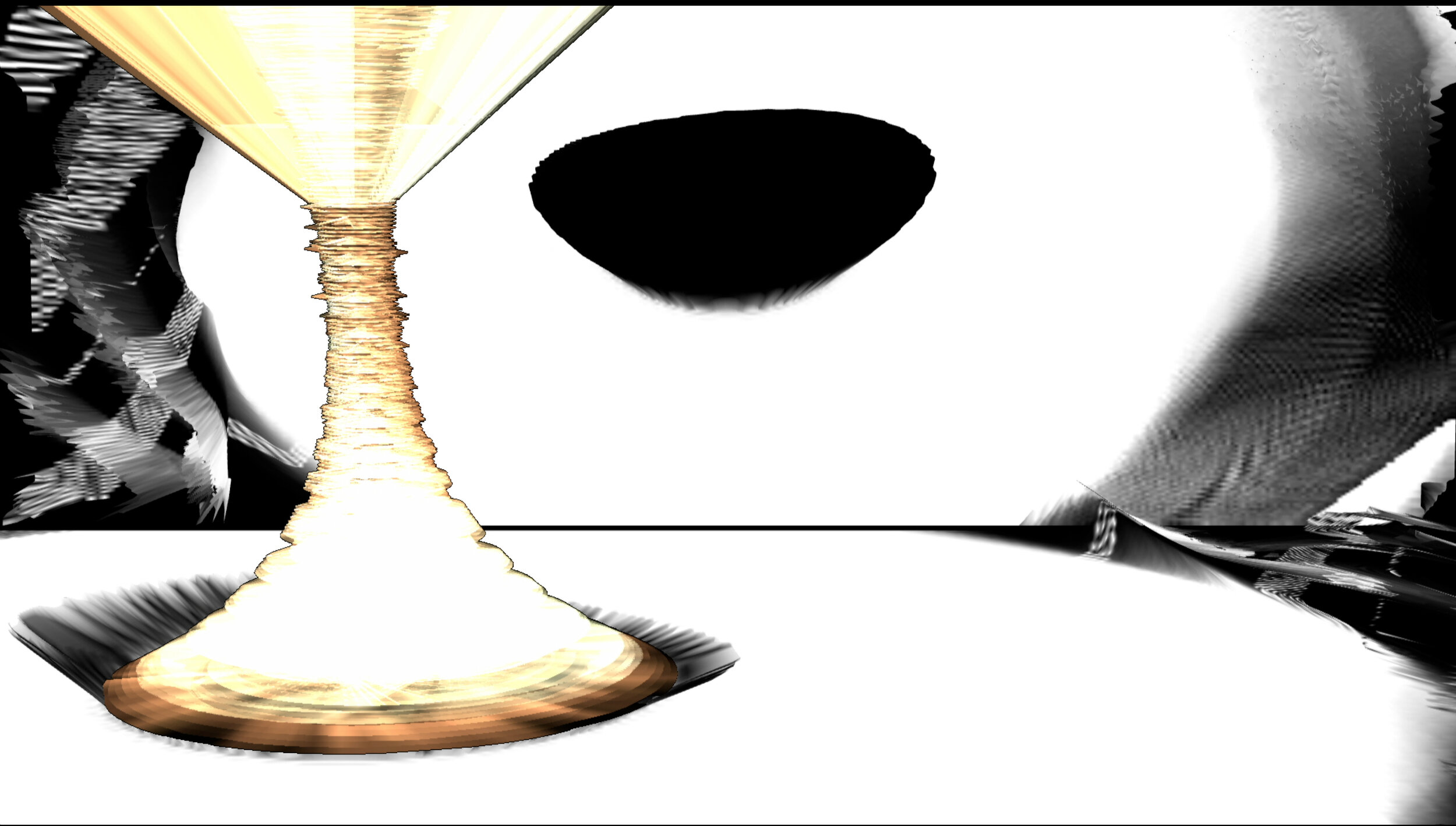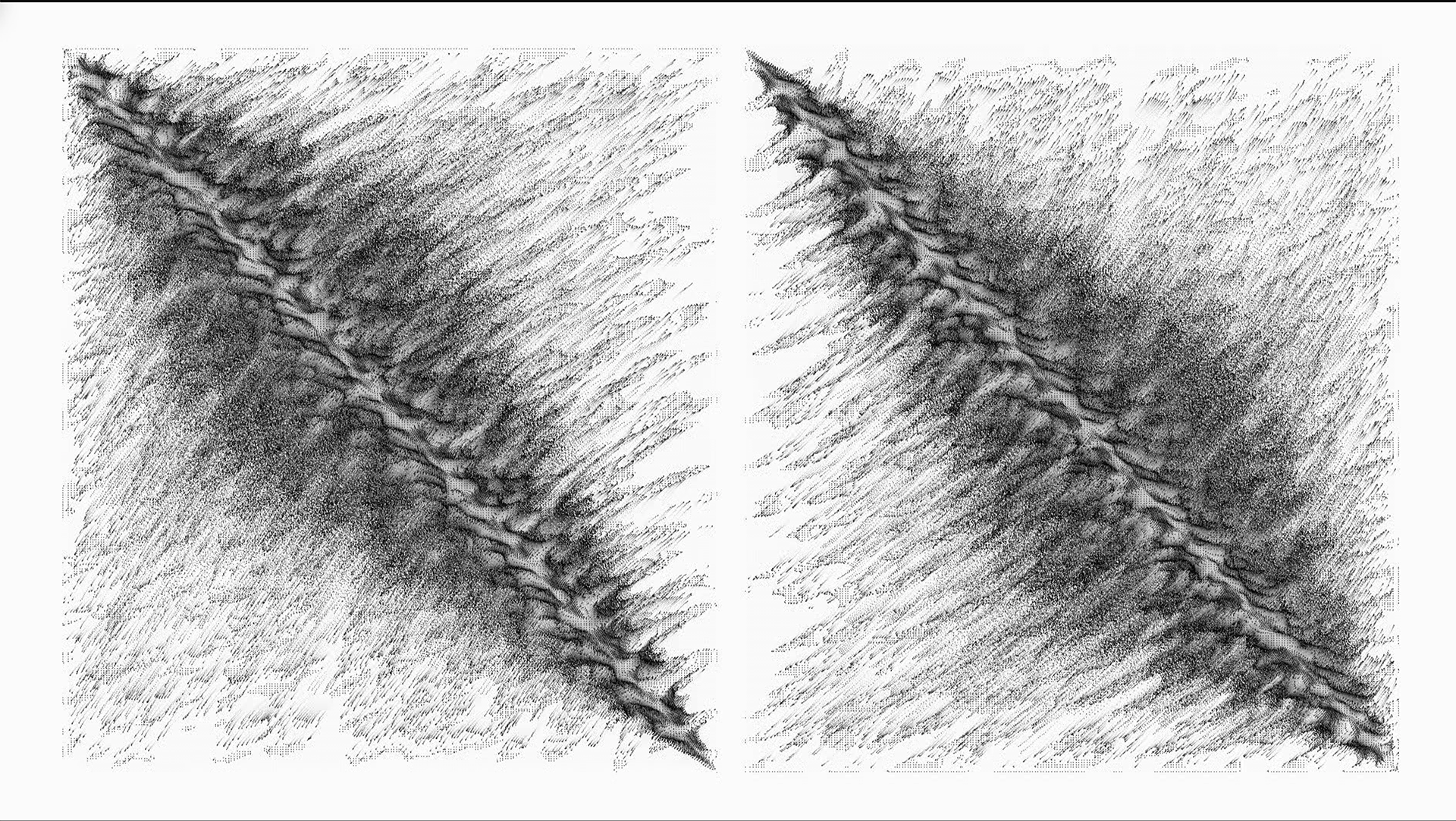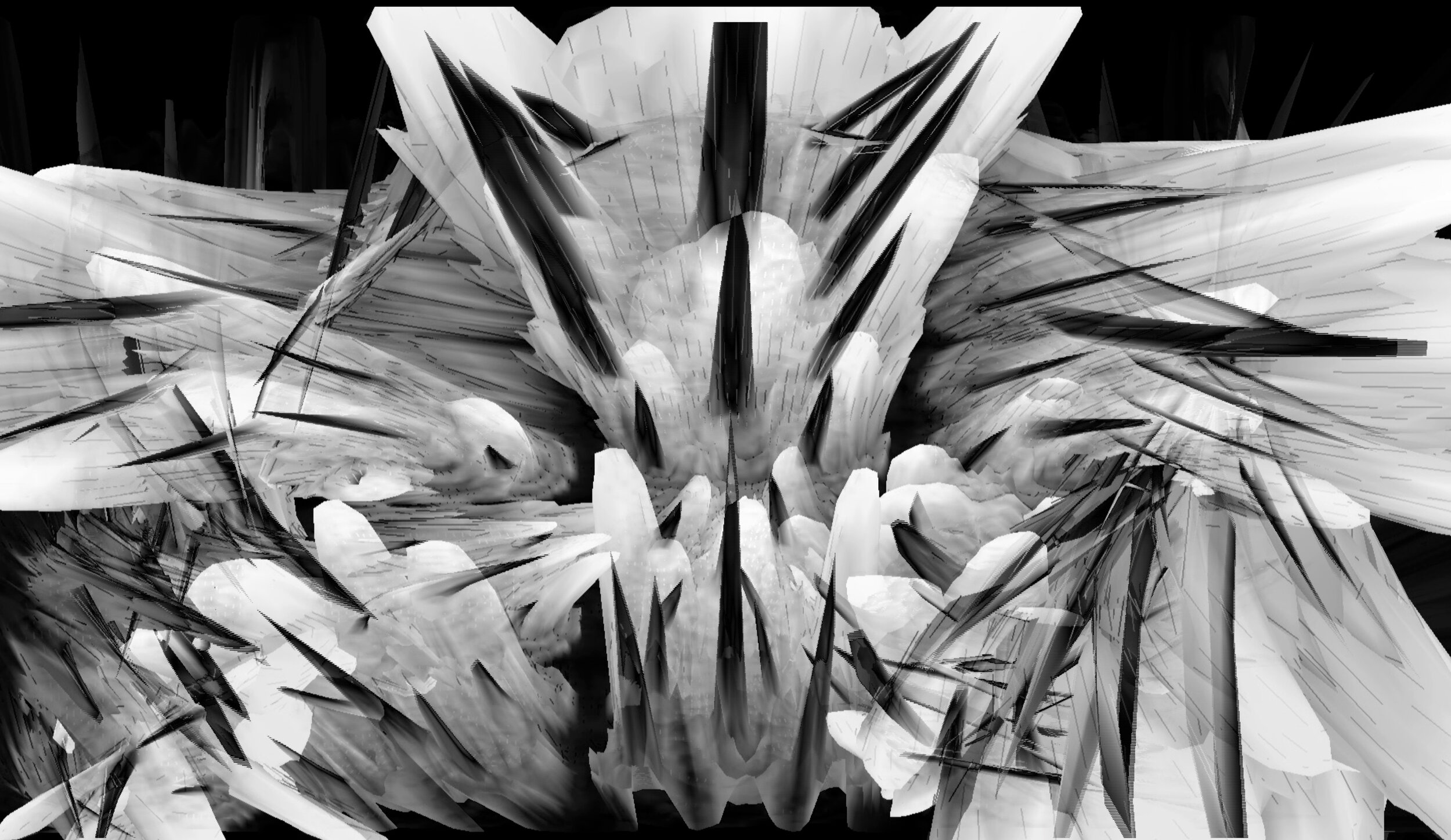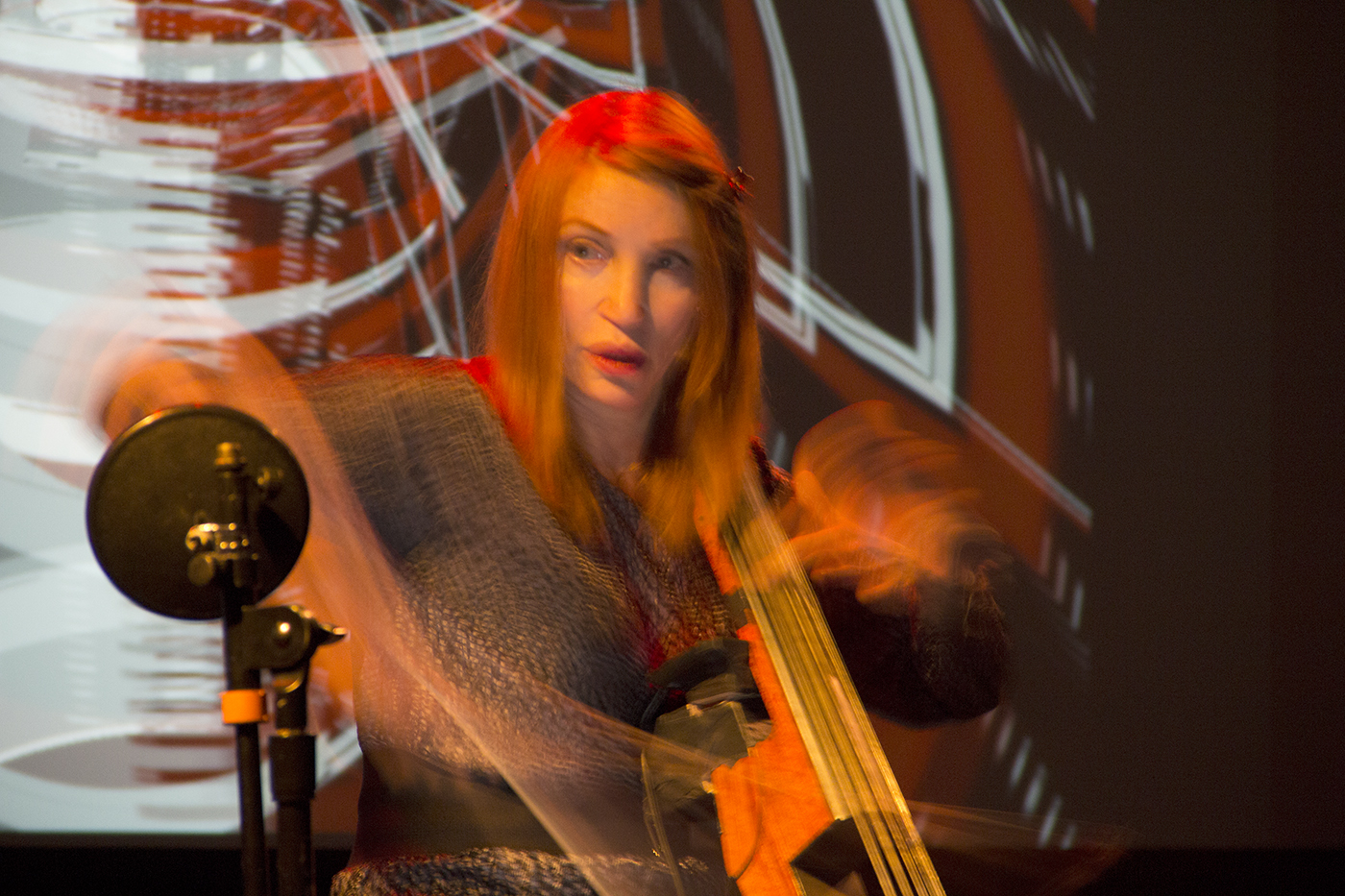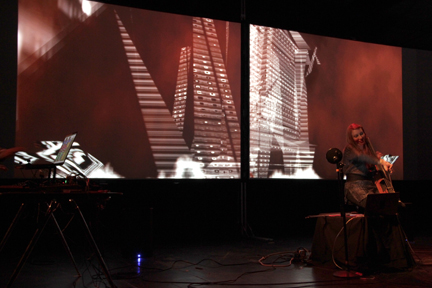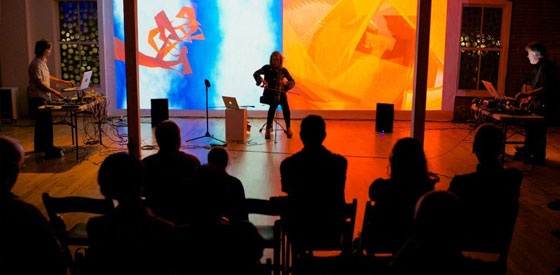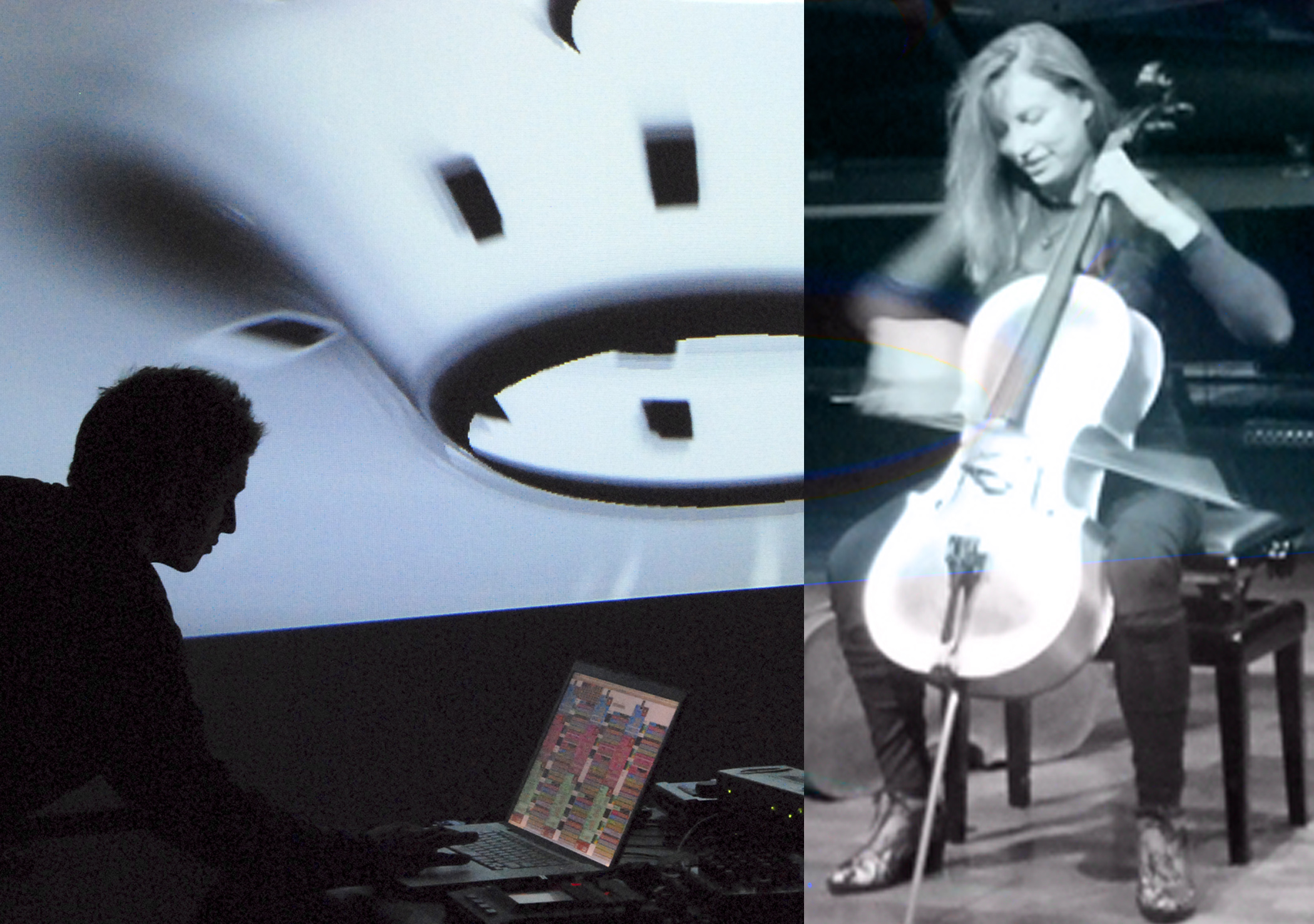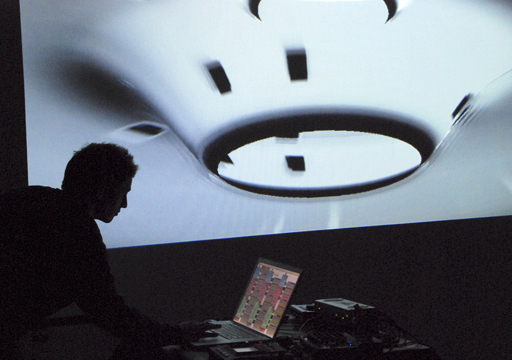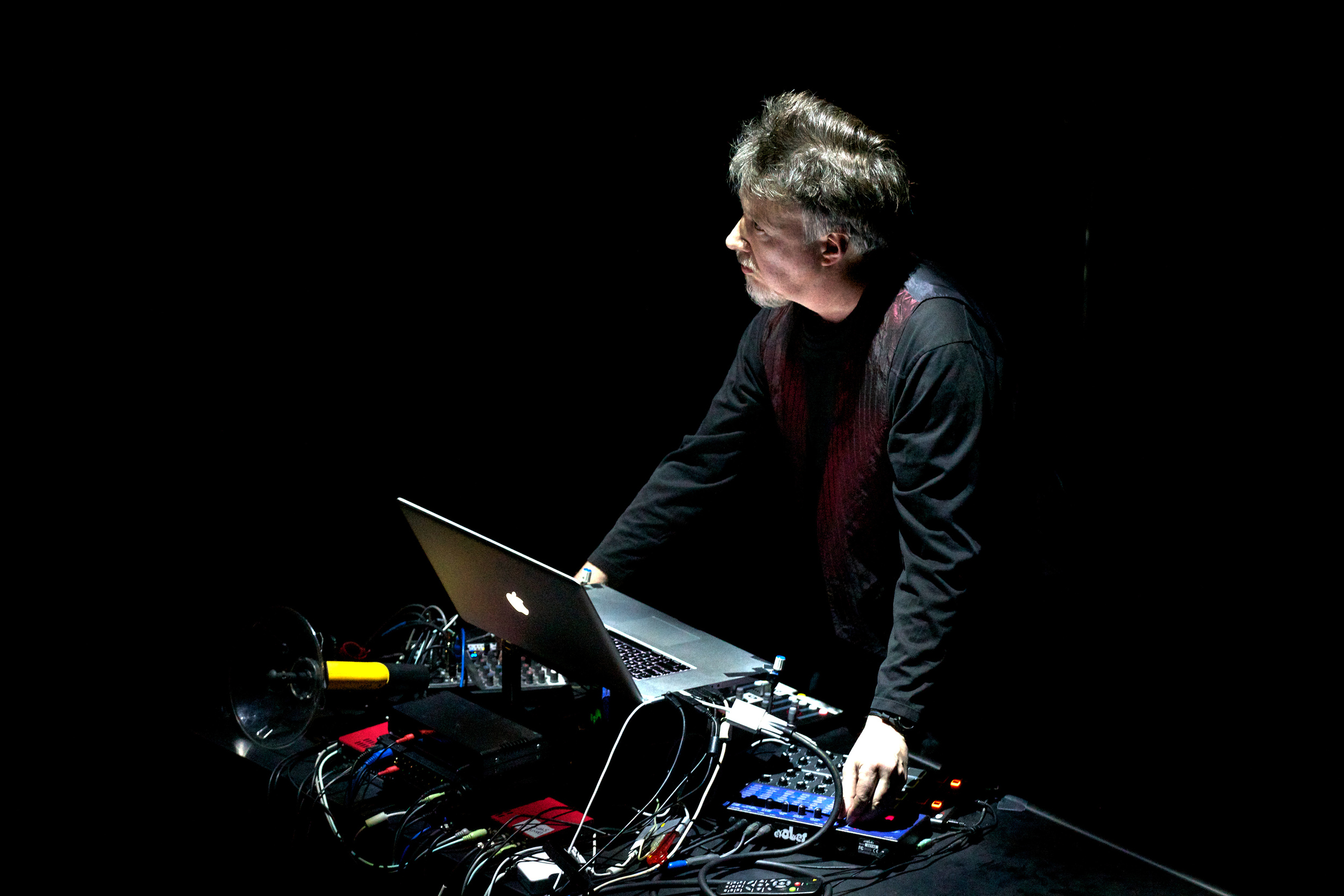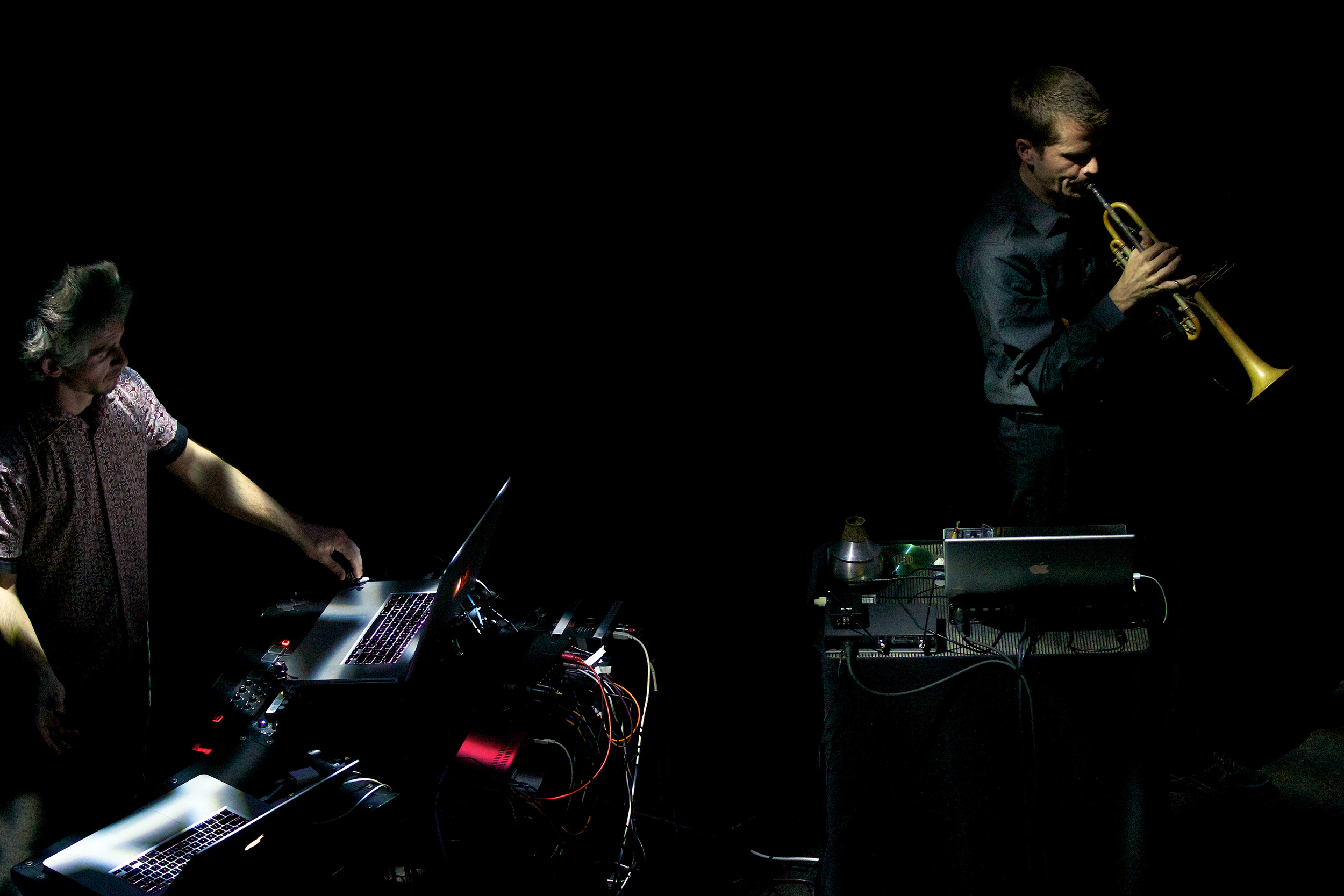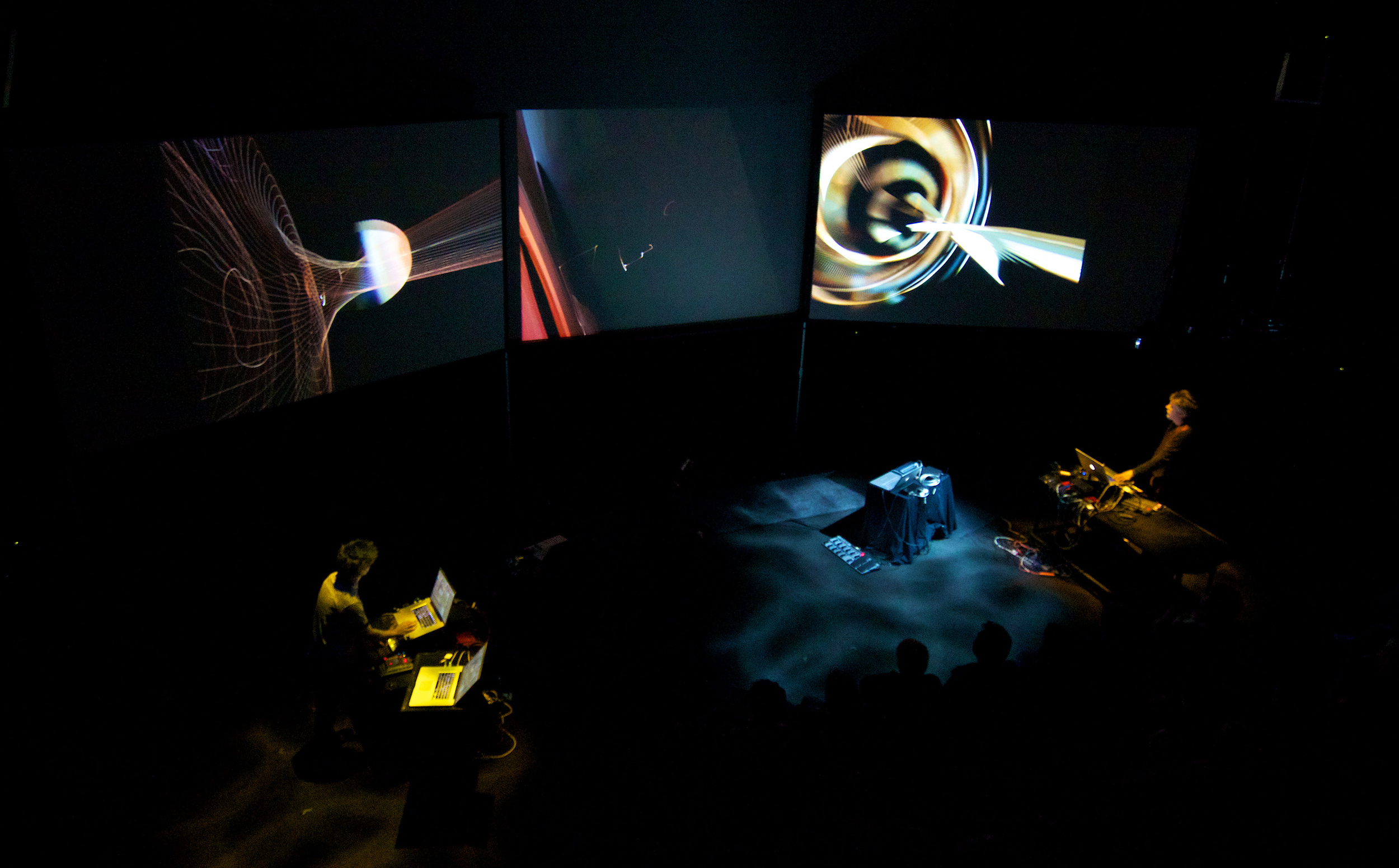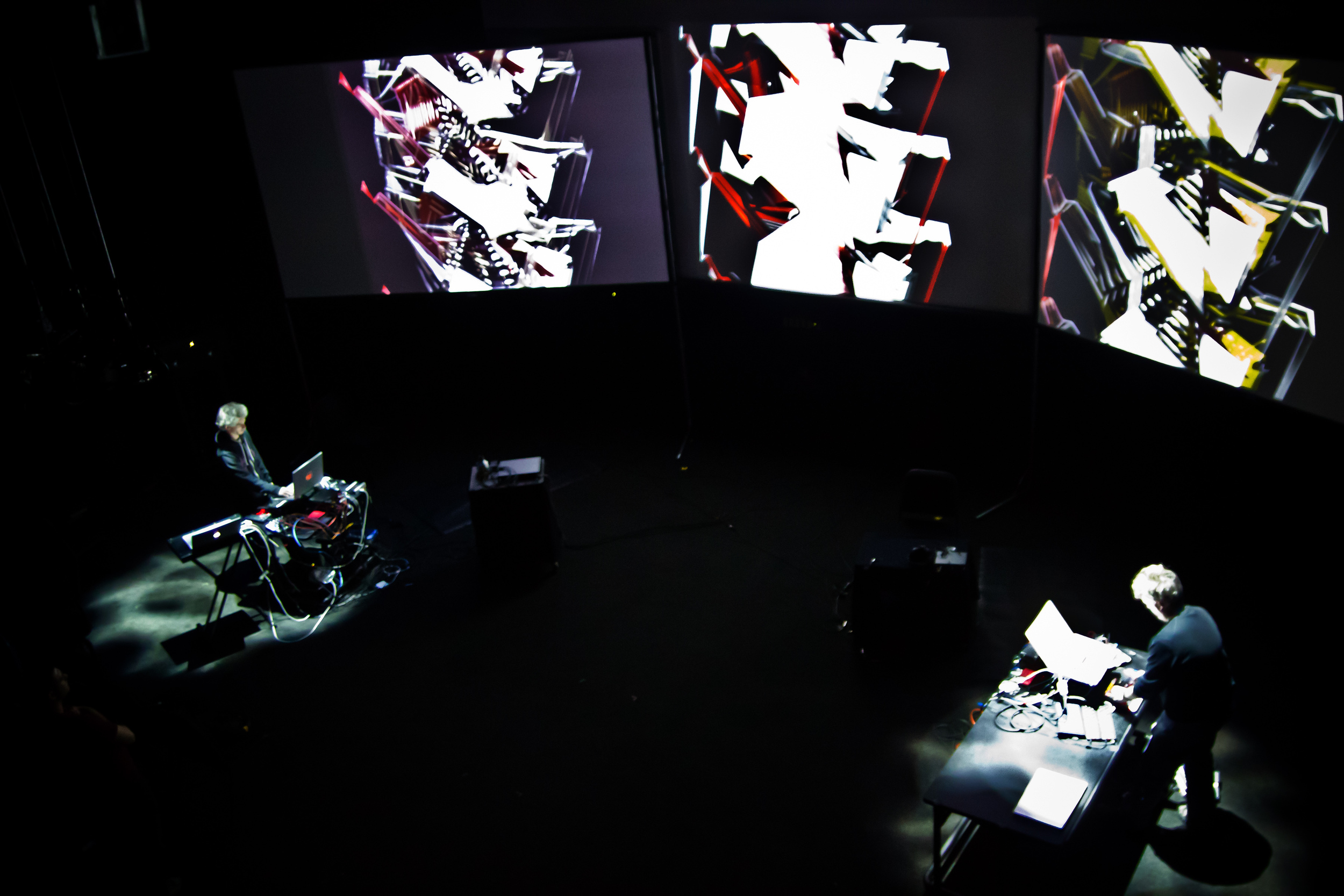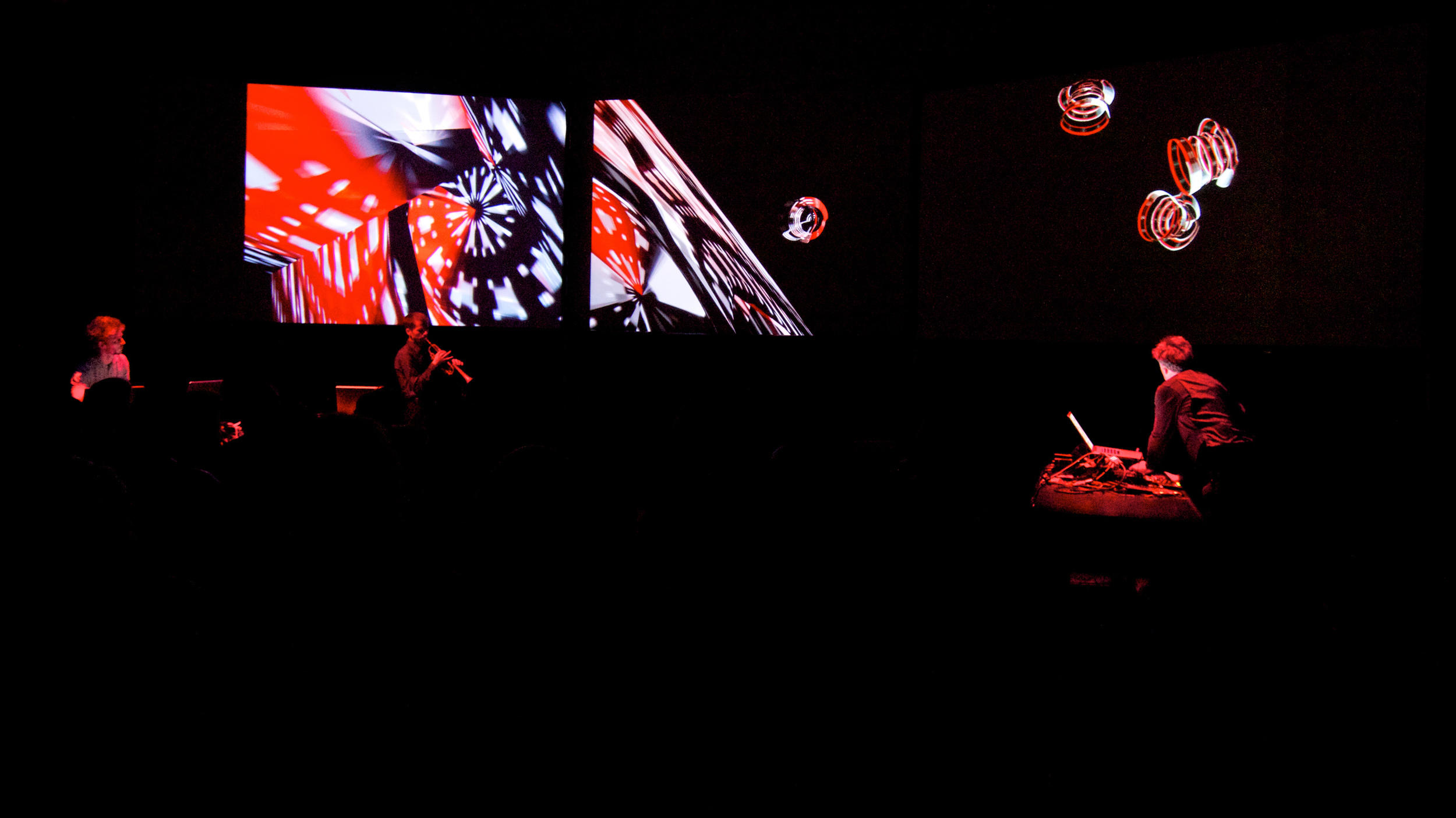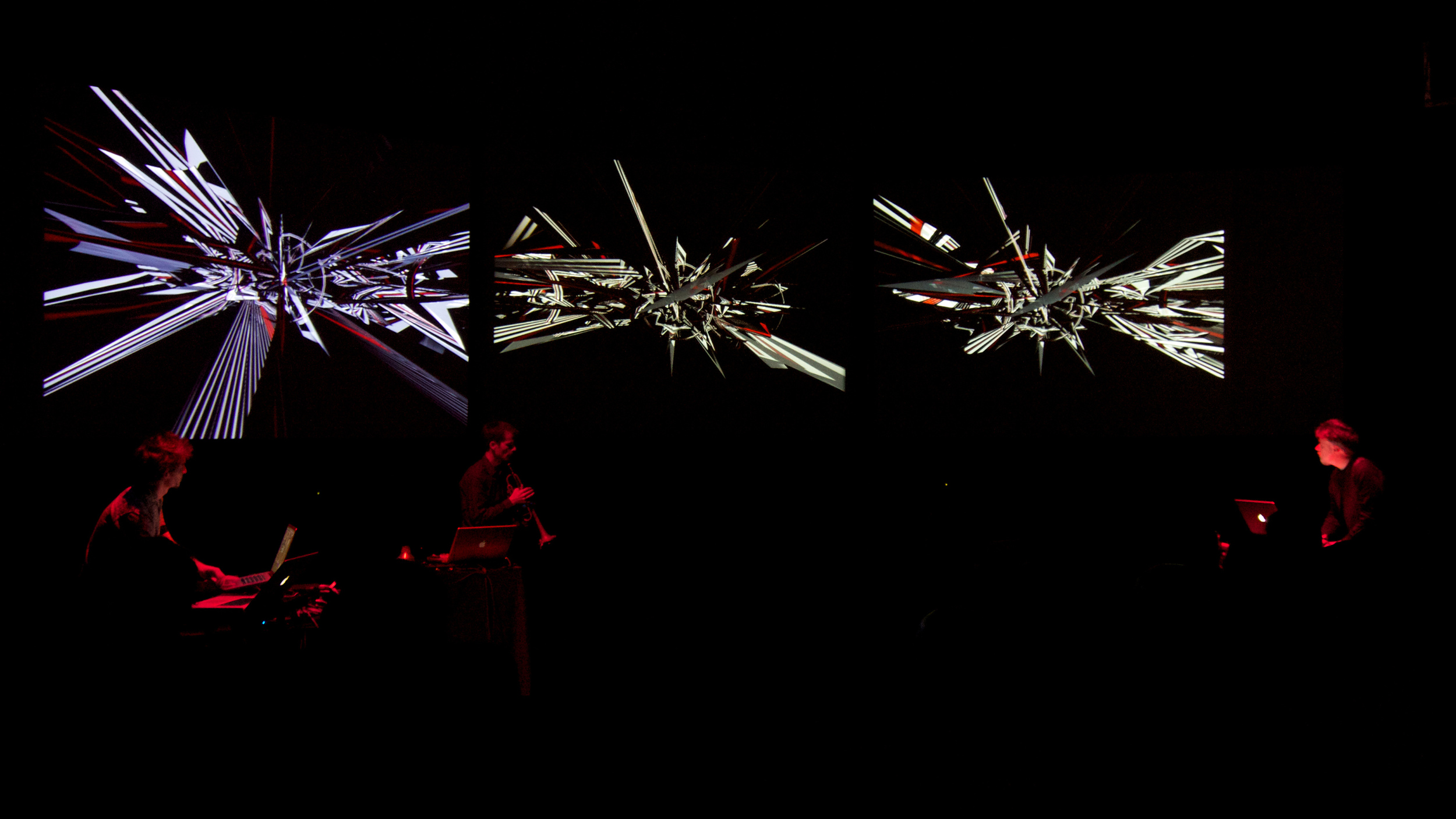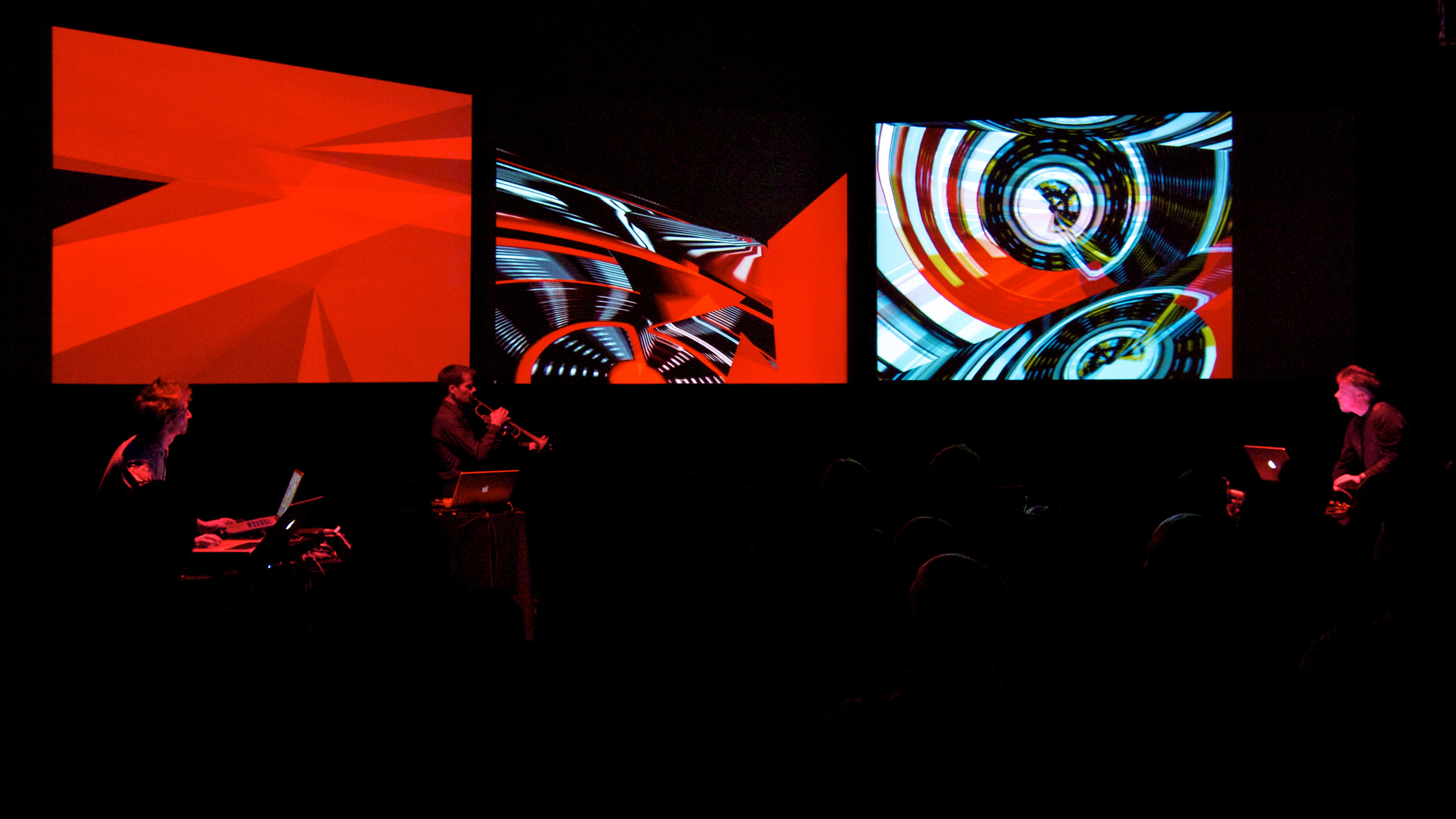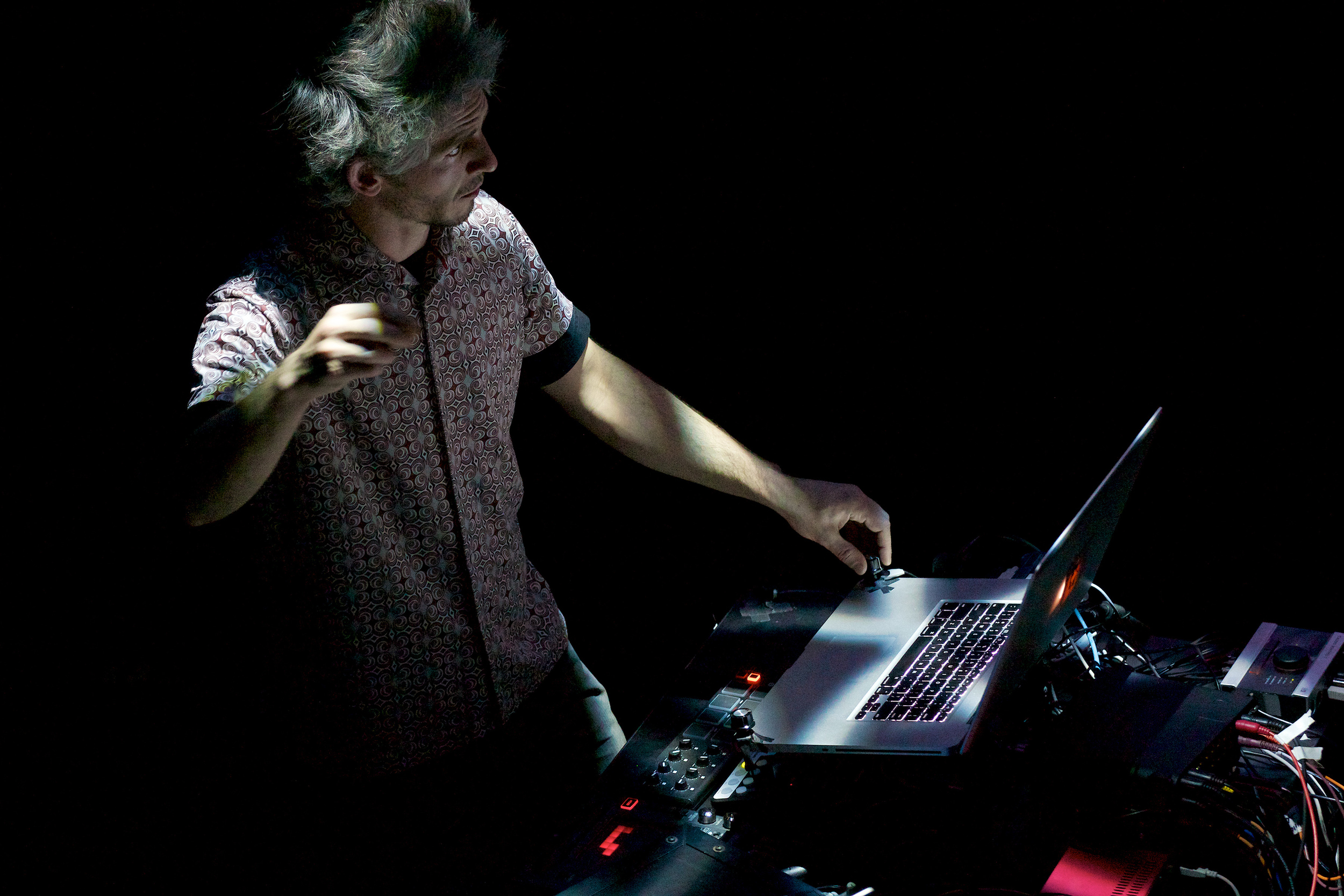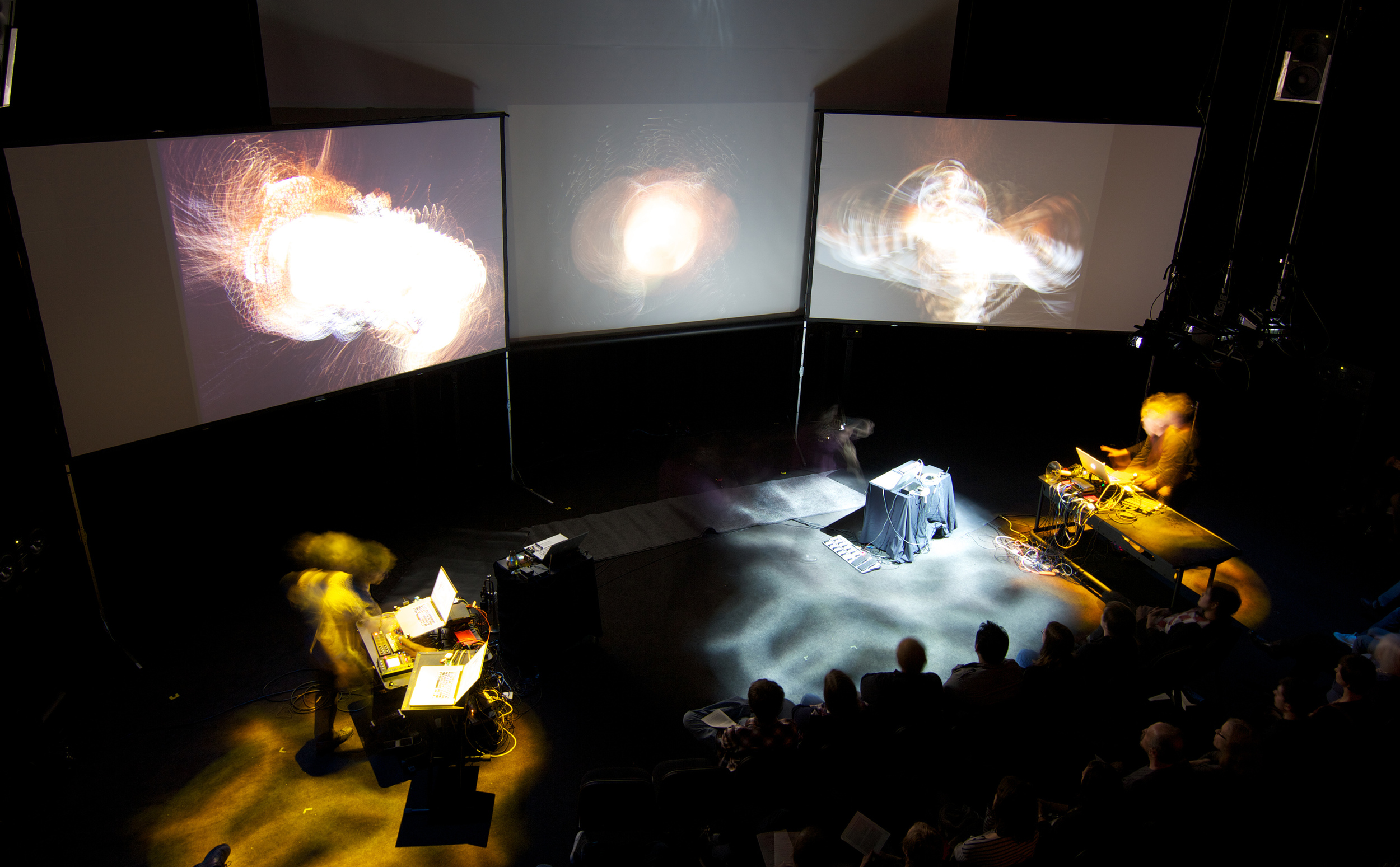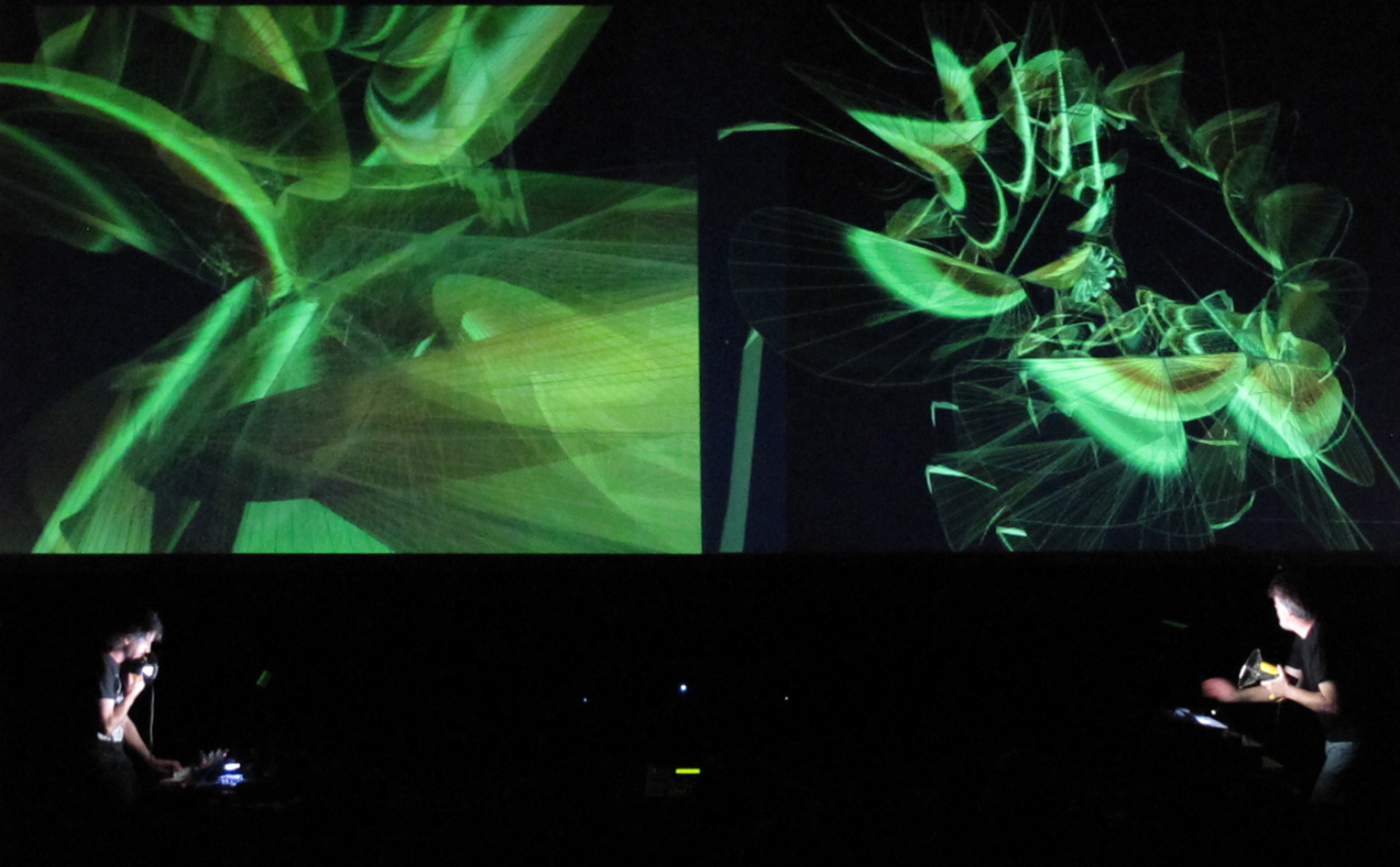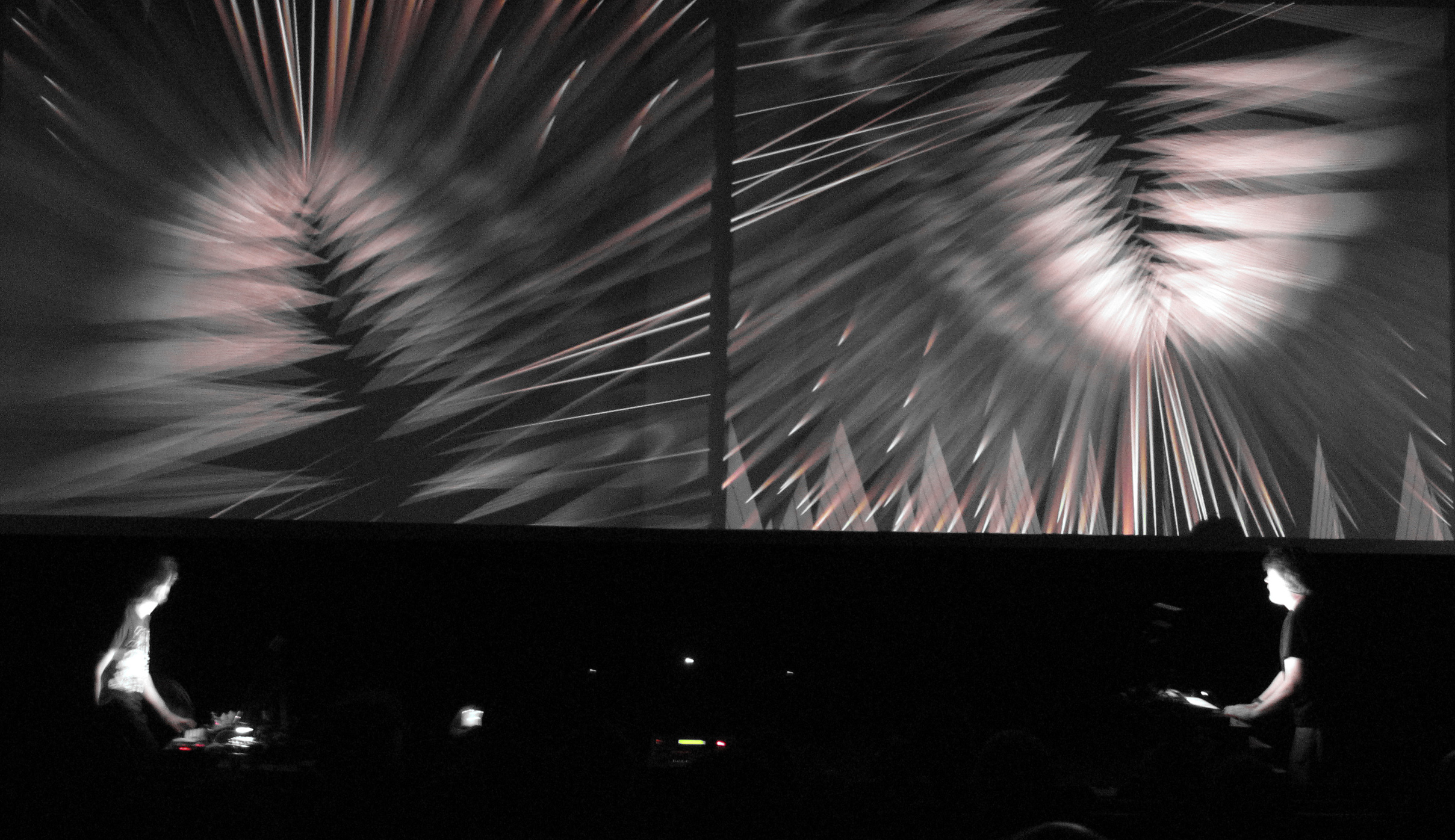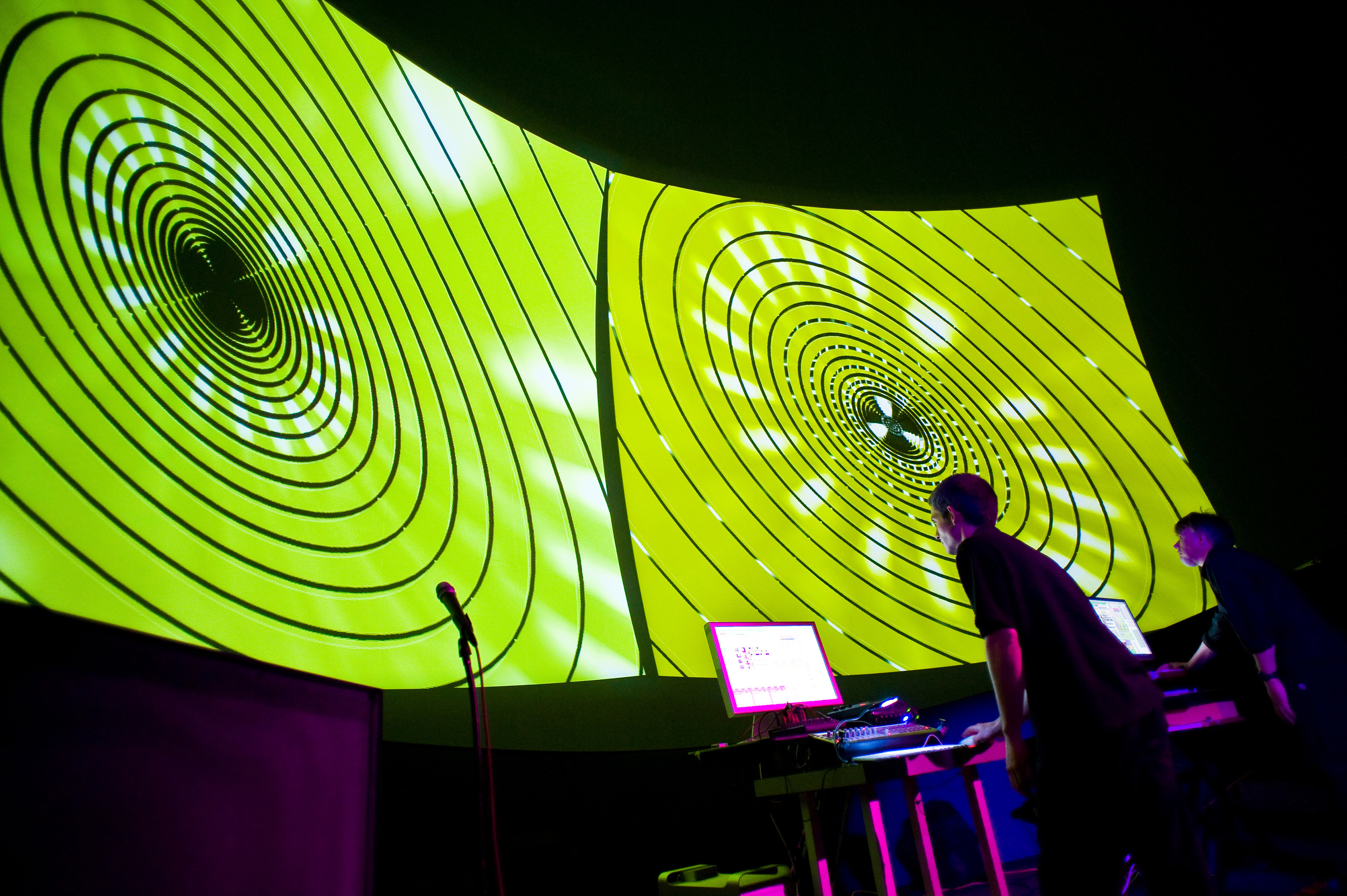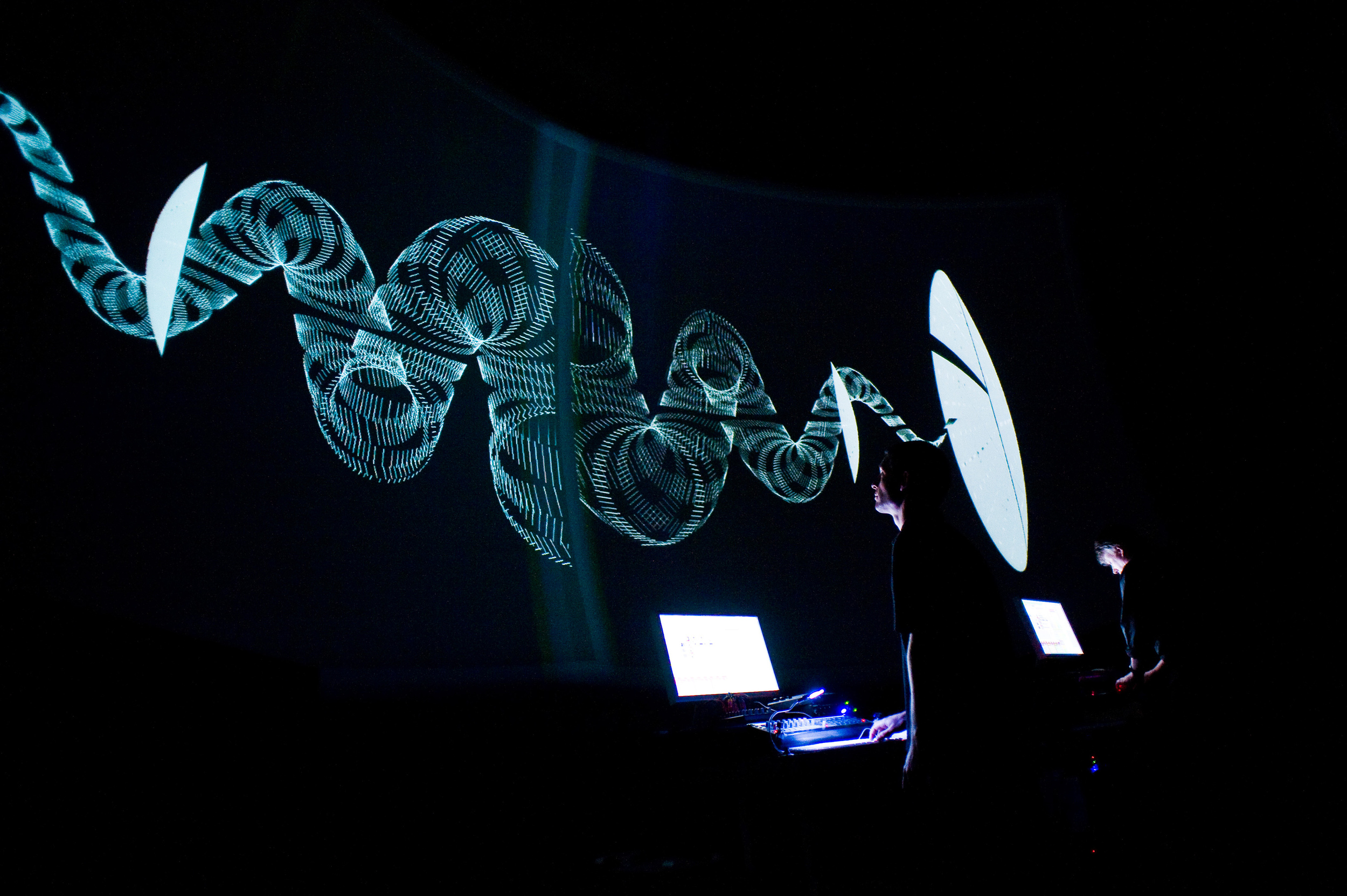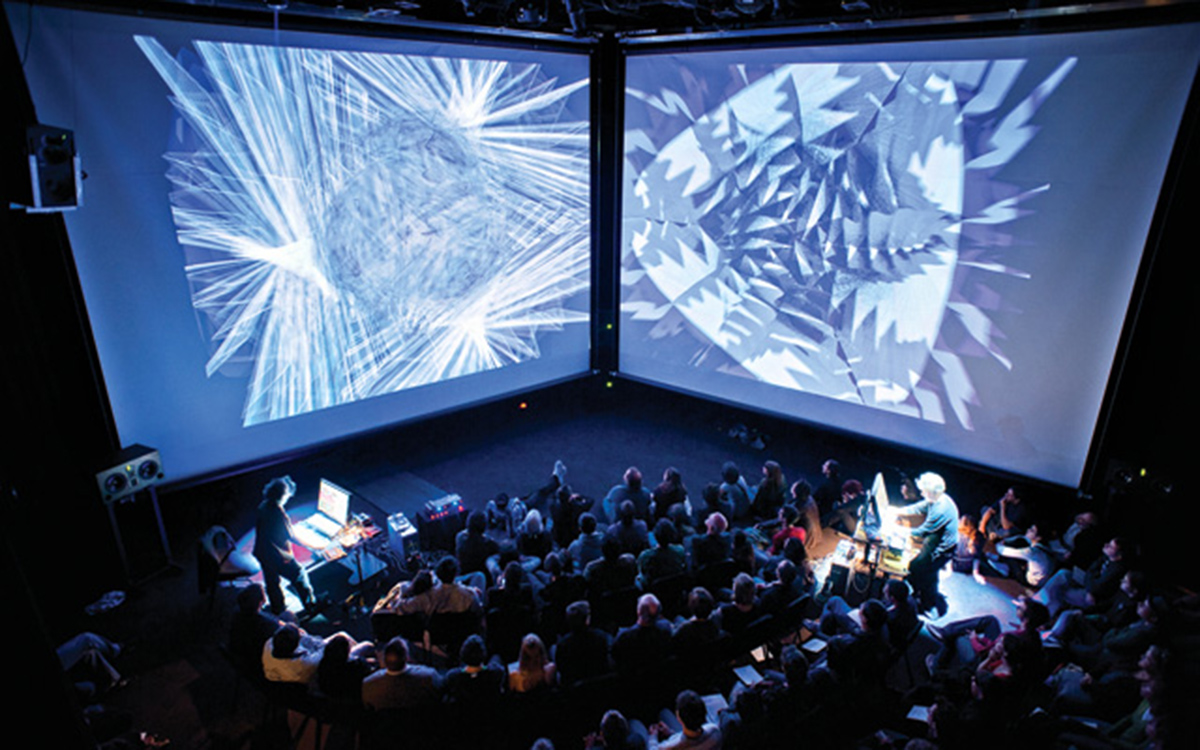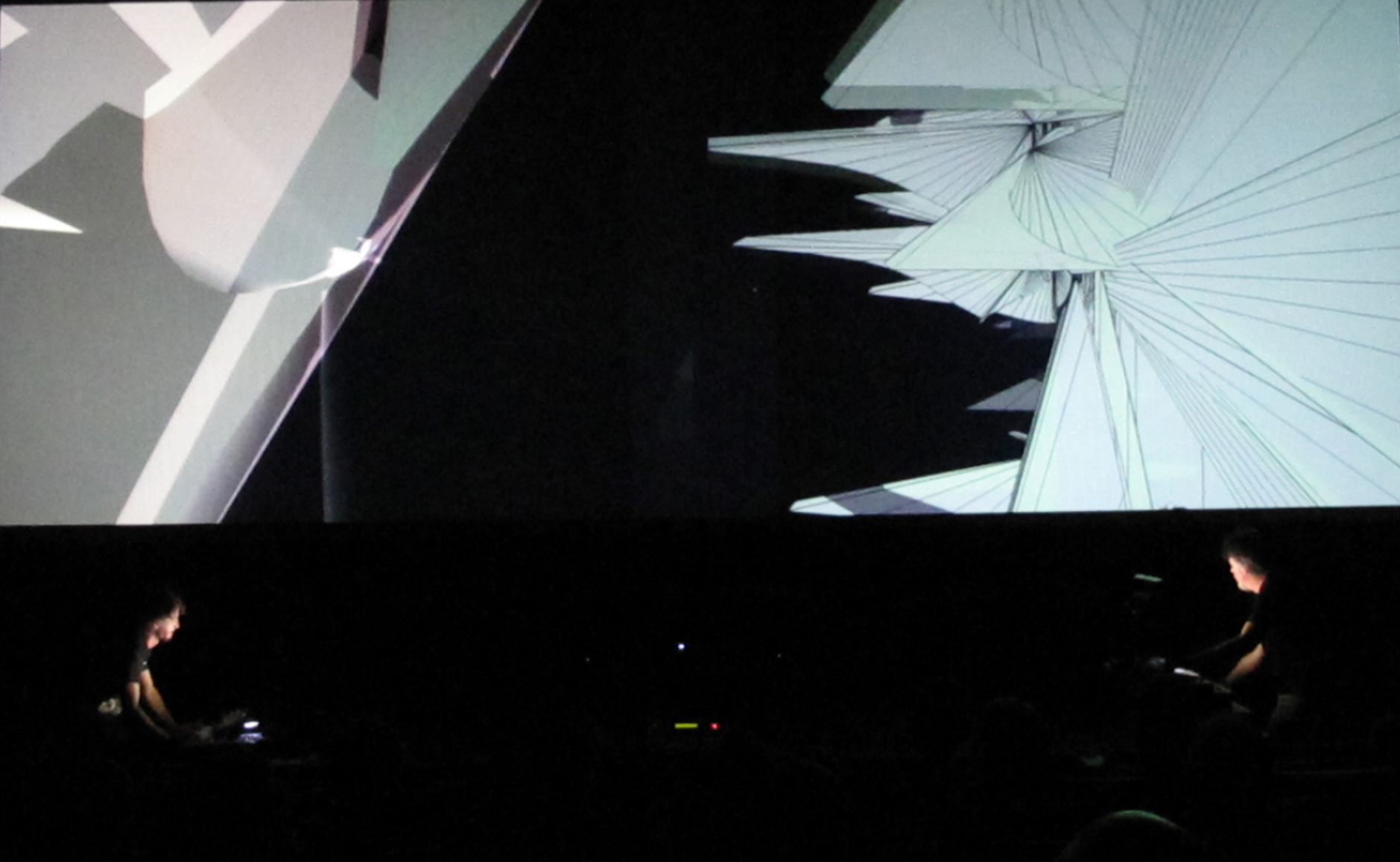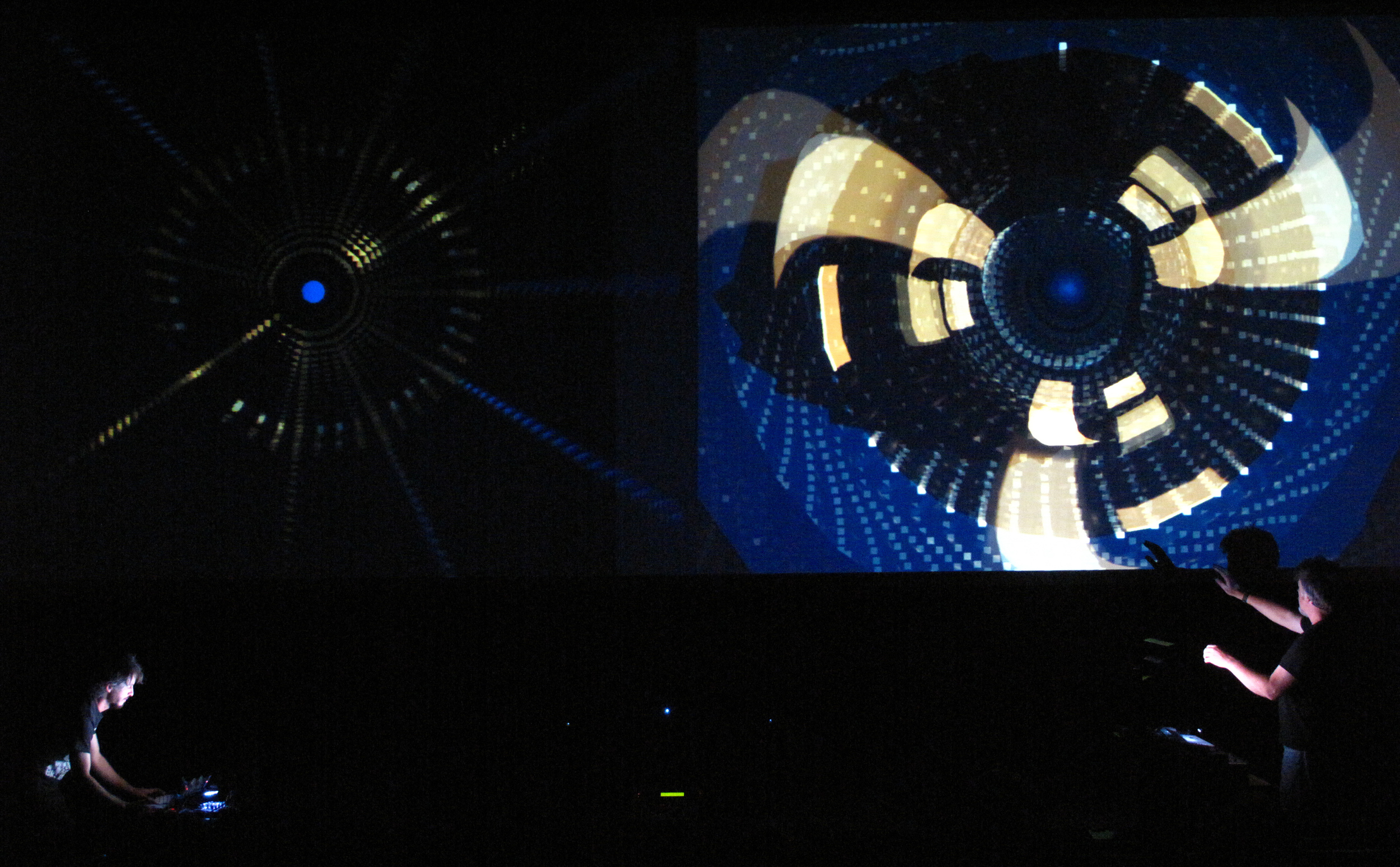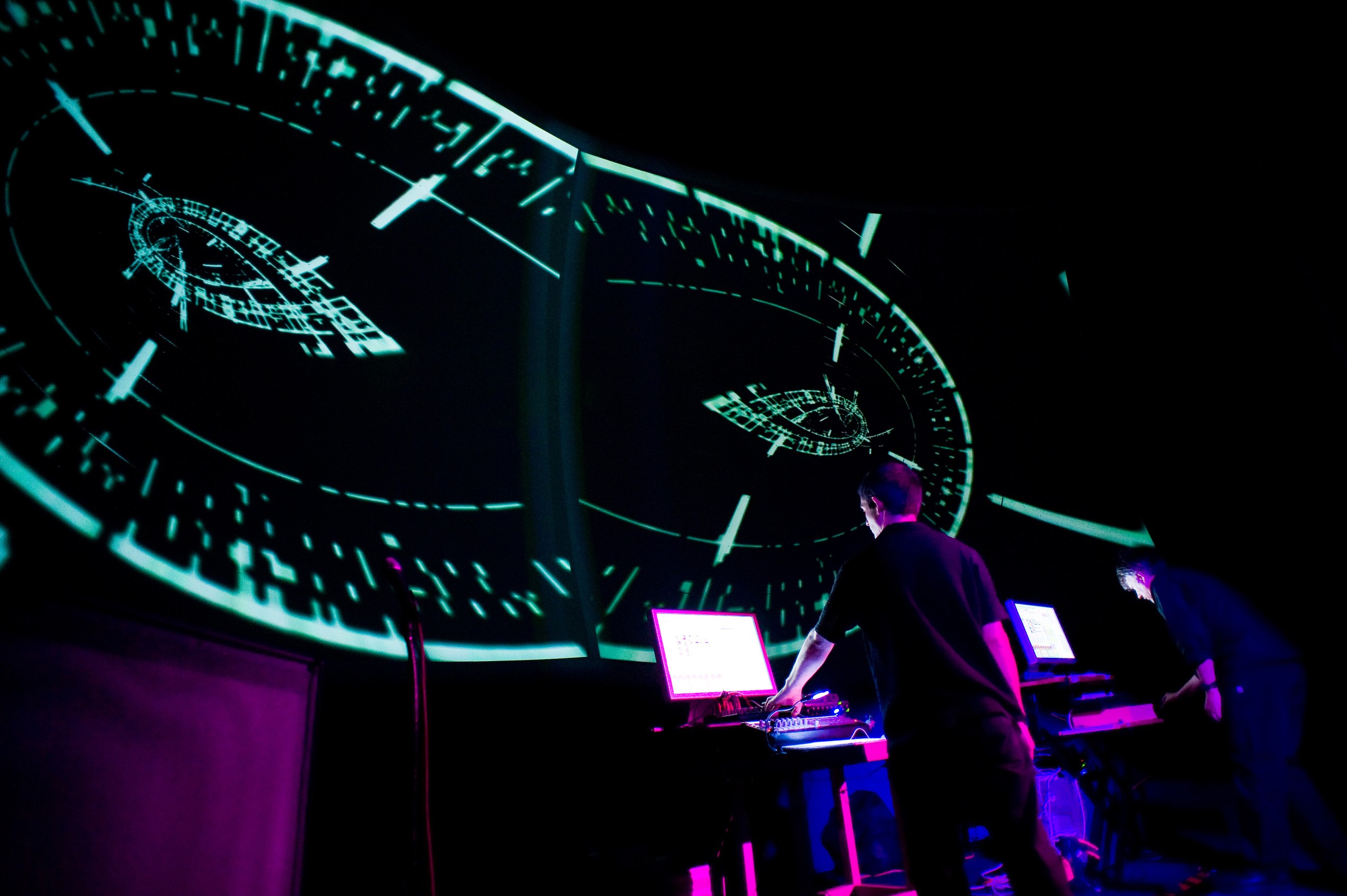"Tao gives birth to one,
One gives birth to two,
Two gives birth to three,
Three gives birth to ten thousand things …”
from chapter 42, Tao Te Ching
The Ten Thousand Things is a project that explores the interplay between inertia, noise and force of attraction within the digital simulation of spinning particle fields. Stout and Metcalf have engaged in an ongoing expedition through these virtual fields to discover latent images, sounds and musical potentials that give rise to often arcane and archetypal emblematic forms. The composition exists as a coordinate map of locations, virtual locales where the performer is likely to find a confluence of intersecting energies that will generate a visual and/or auditory event or behavior. The performance thus takes form as an exploratory journey into a vast noise-field in search of resonant phenomenon. One obvious corollary is the search for extraterrestrial life. Advancing this metaphor further, all of creation can be seen to exist as a vibratory nexus that is expressed through a near unending stream of structural phenomena that may or may not be perceivable to our augmented human perception. The spatial distance between these virtual nodes of aesthetic potential may be exceedingly far. When one arrives at the coordinate there may be a chimera of some shape or form, perhaps it is reminiscent of a vessel, fountain, field, blossom or undulating serpentine spire. The performer decides how to make these ephemeral structures “sing” with the distinct possibility that the moment may unfold into unexpected visual complexity, or be a fleeting encounter dependent on a very narrow window of existence.
